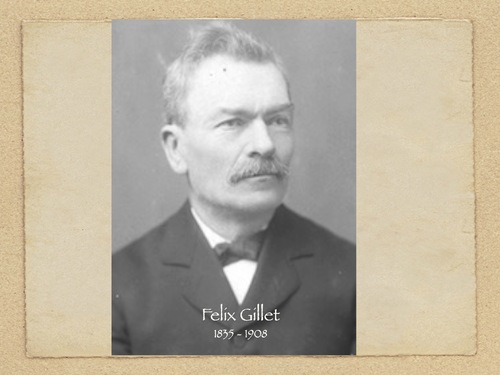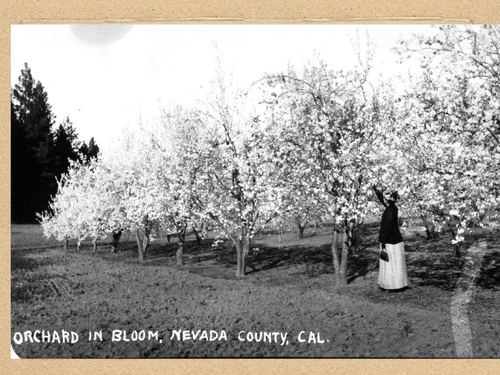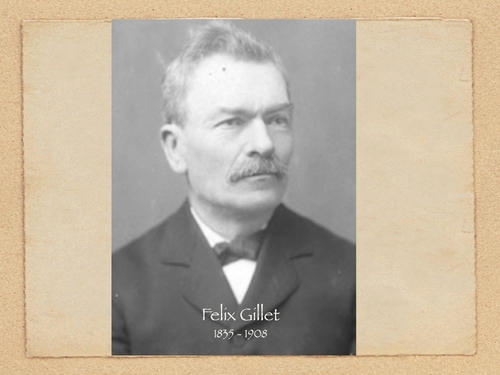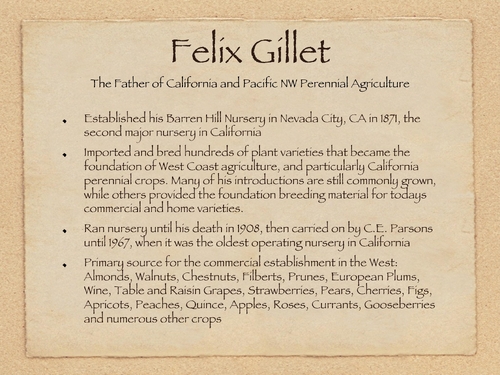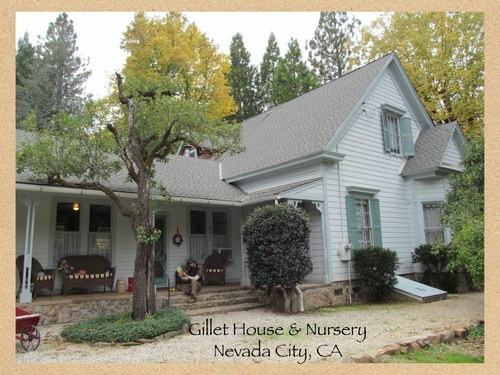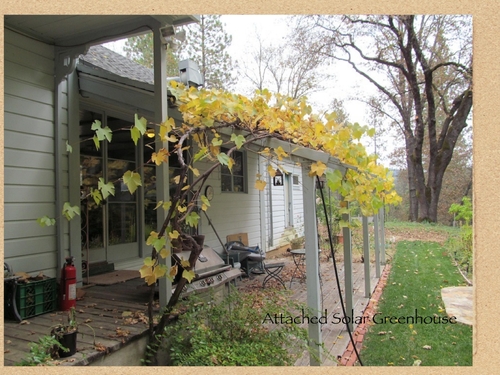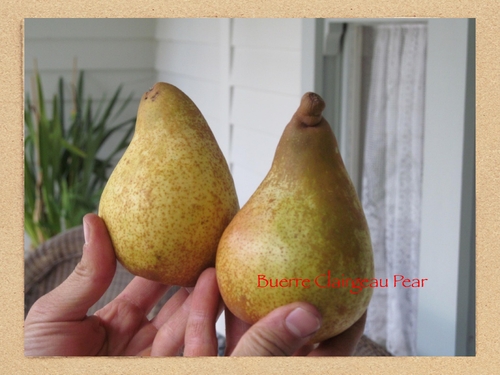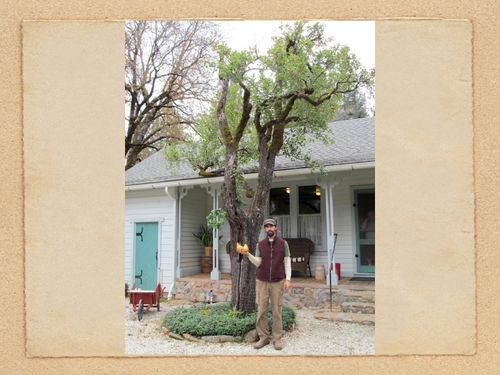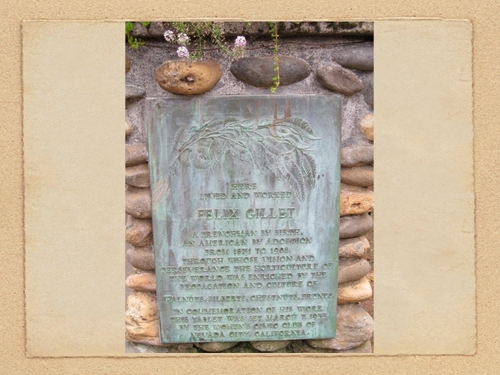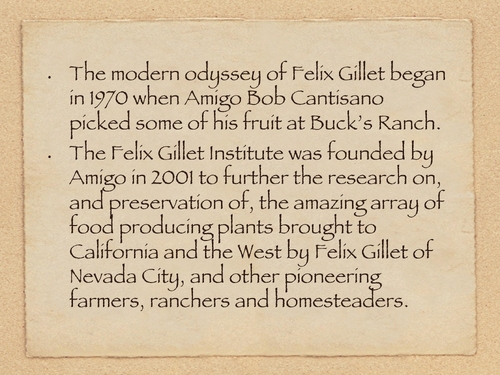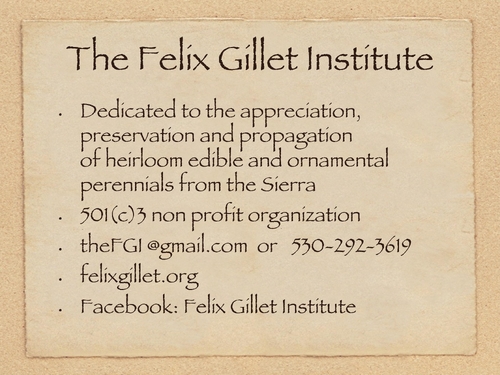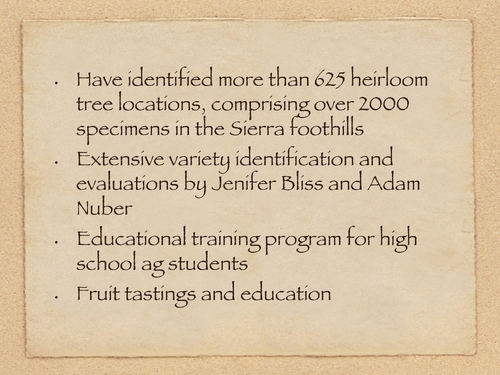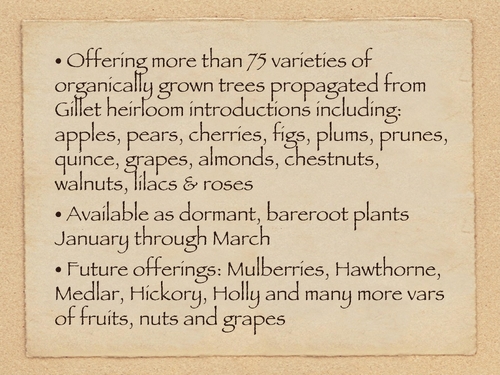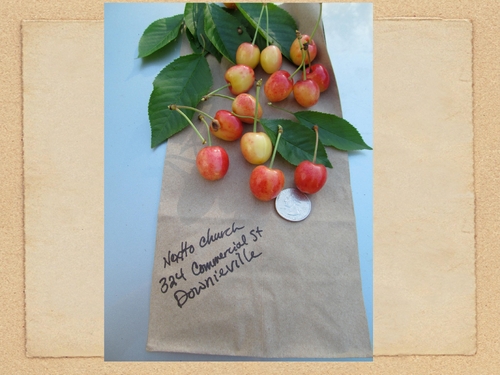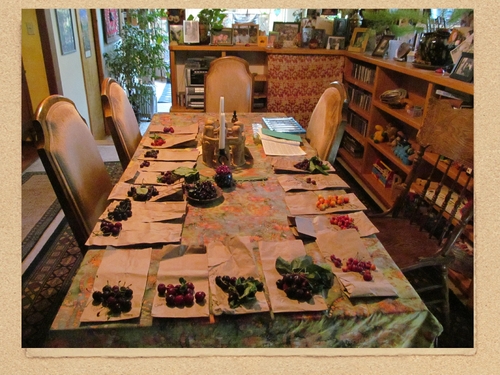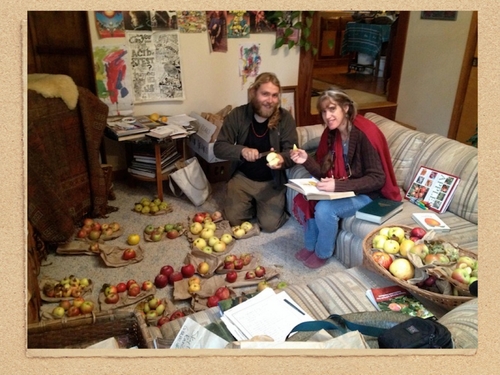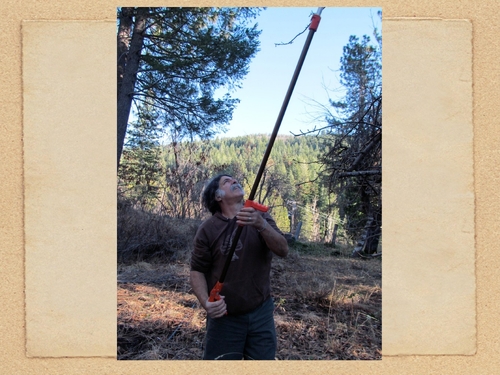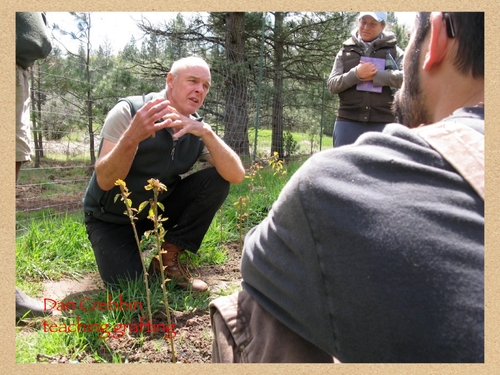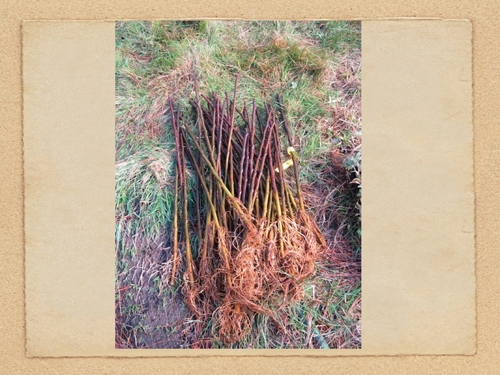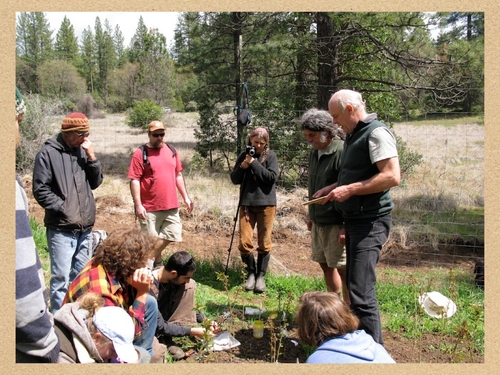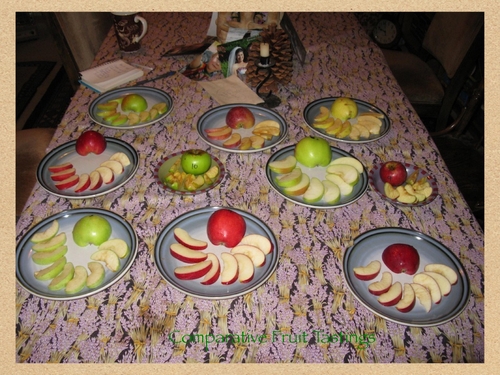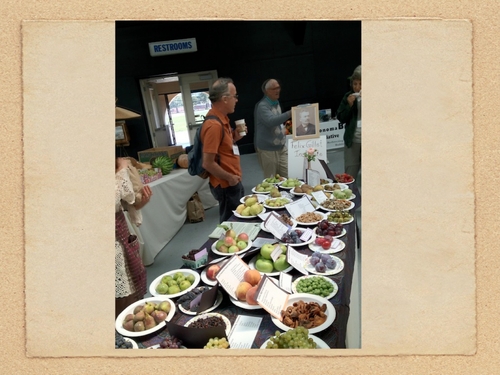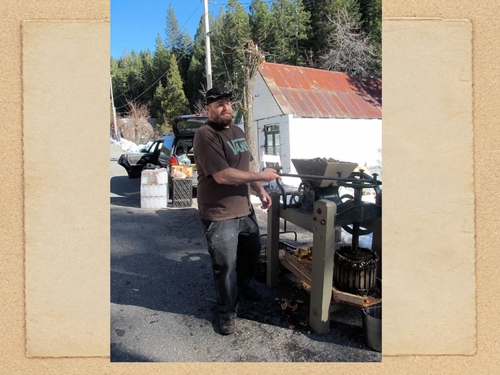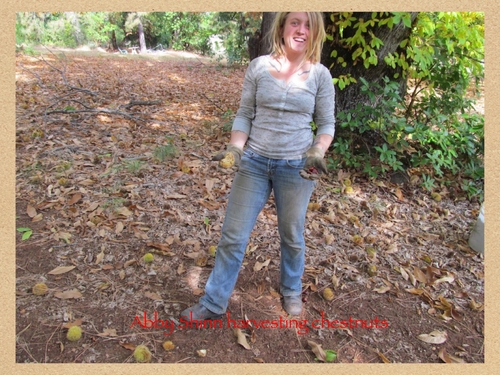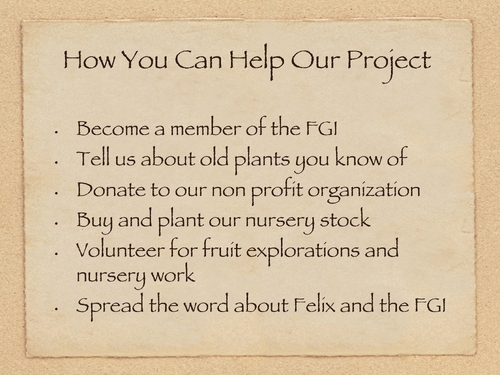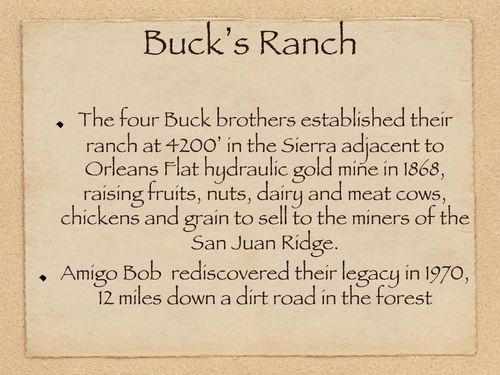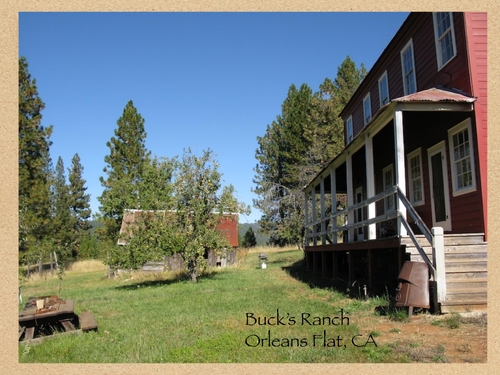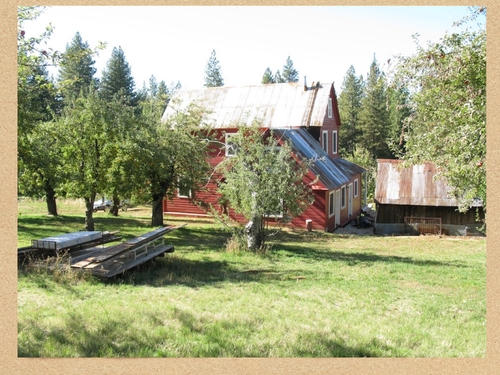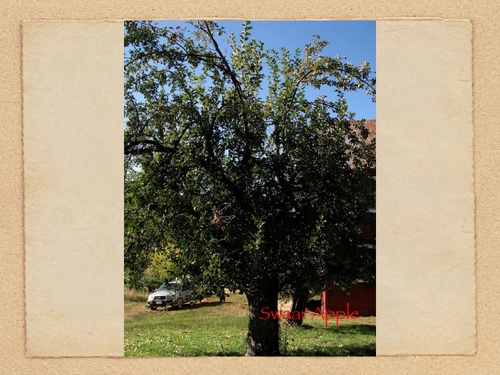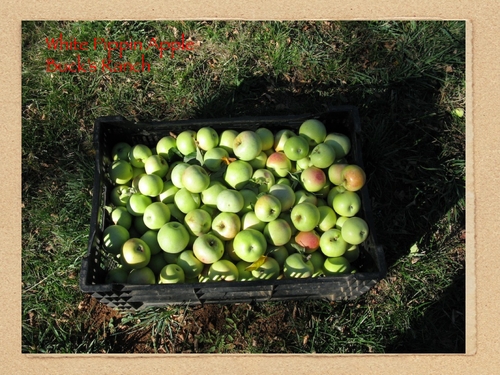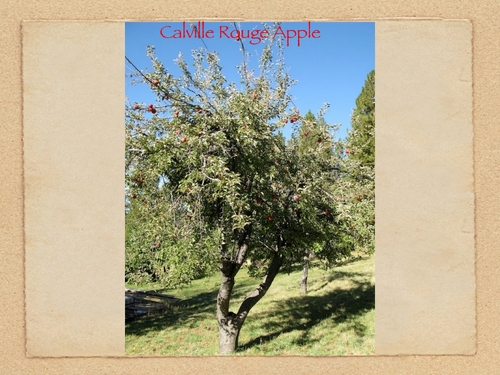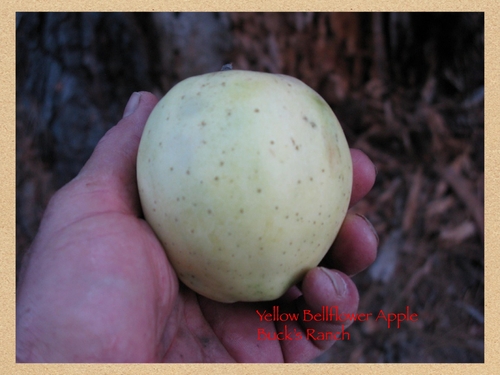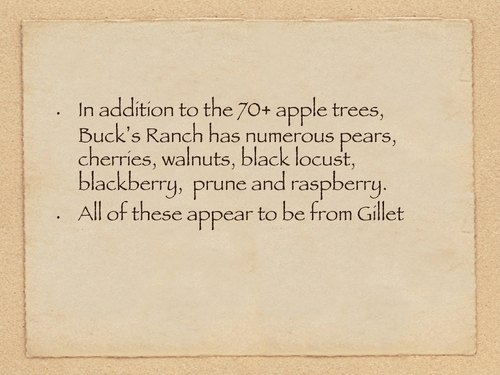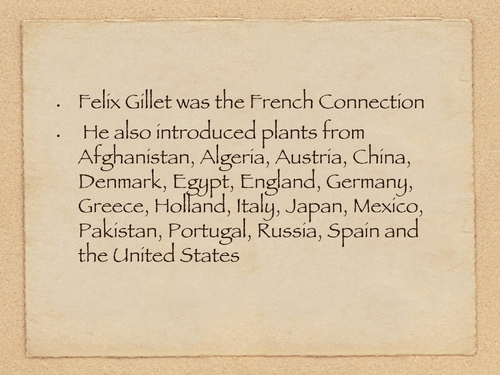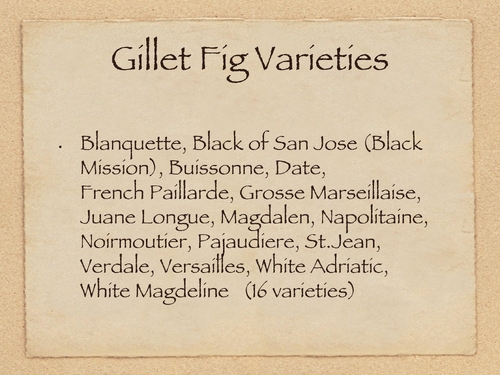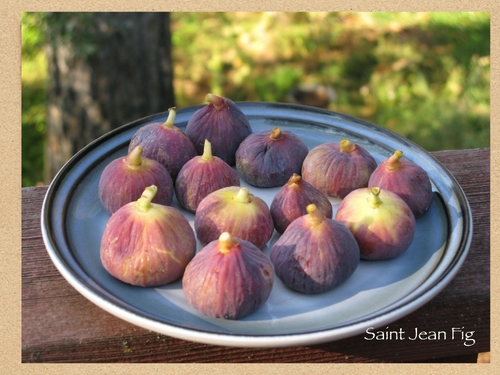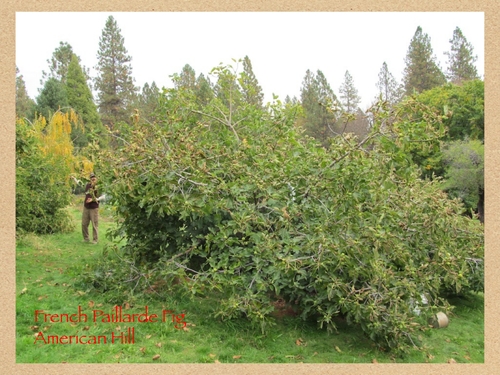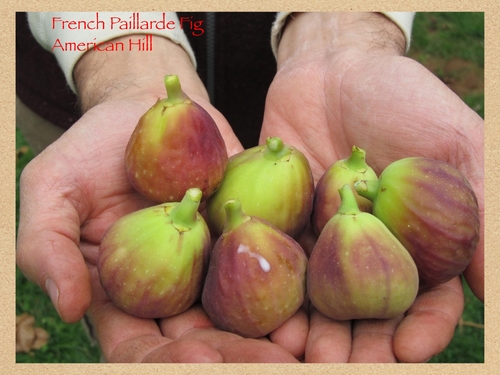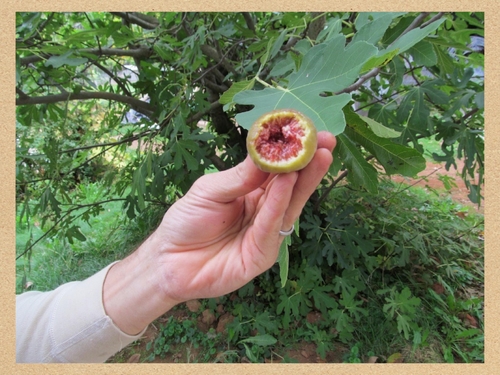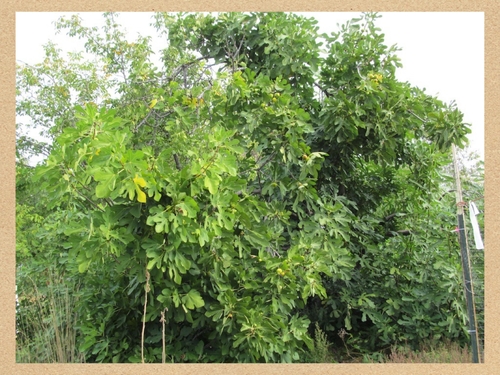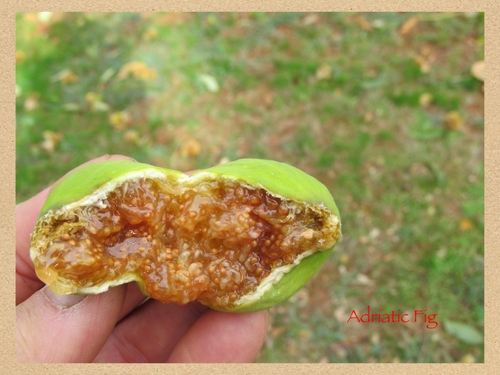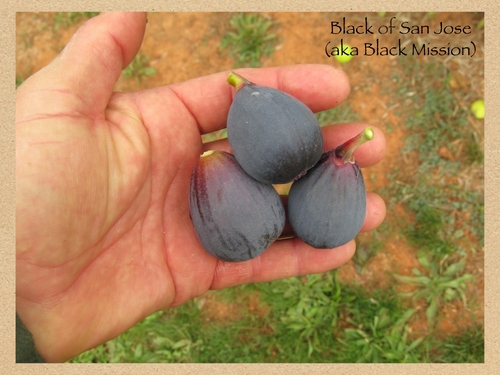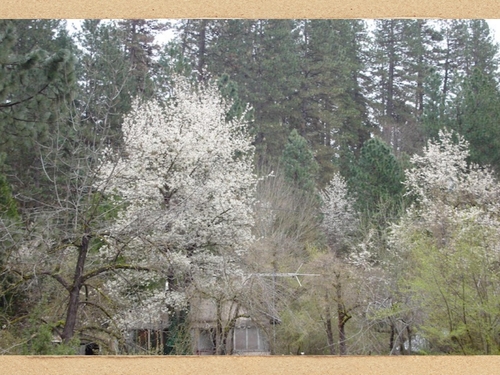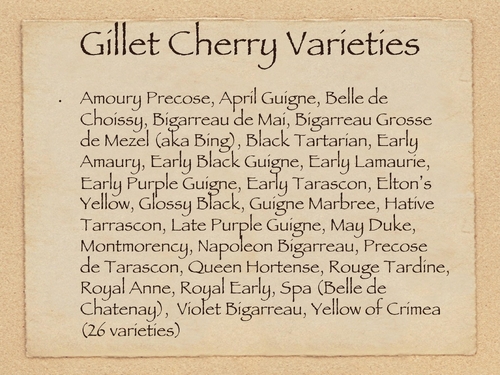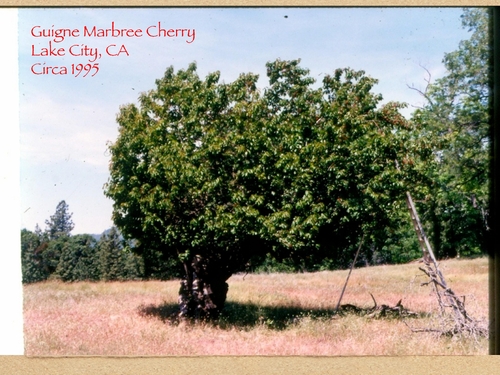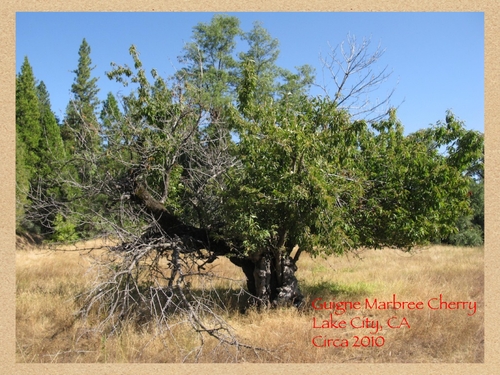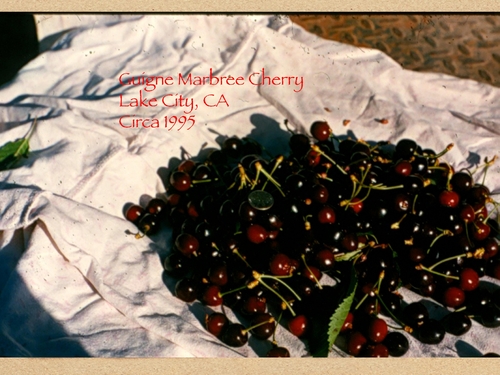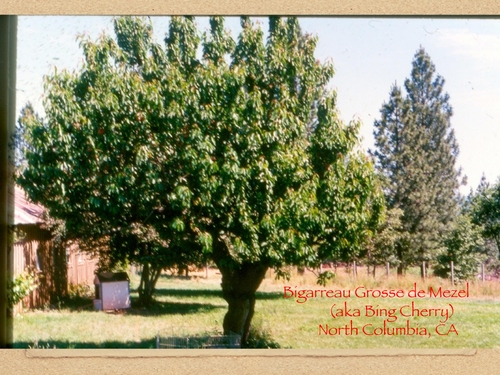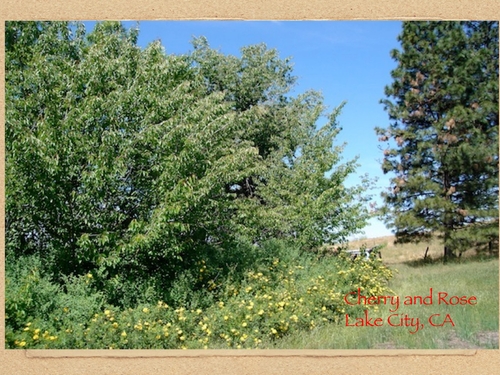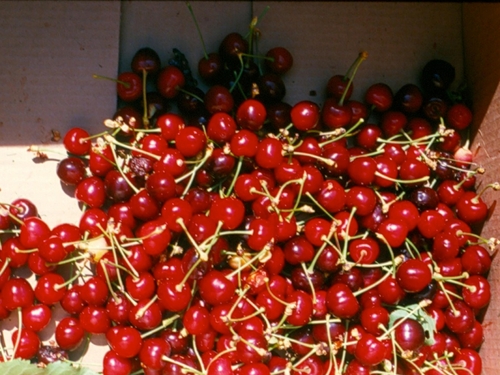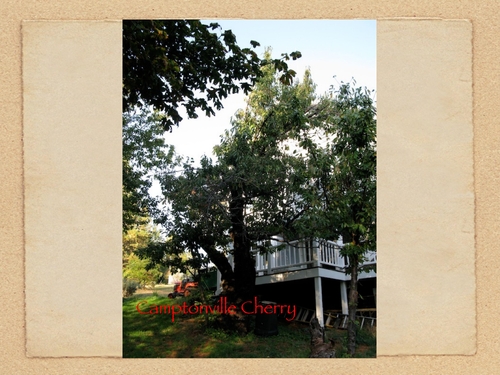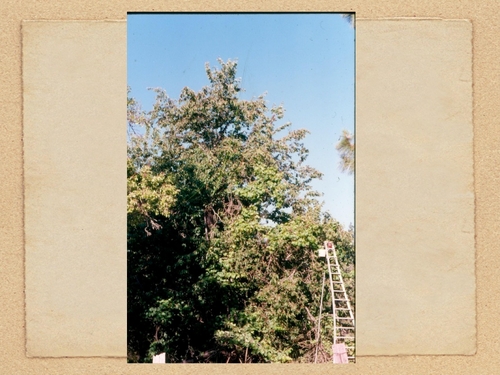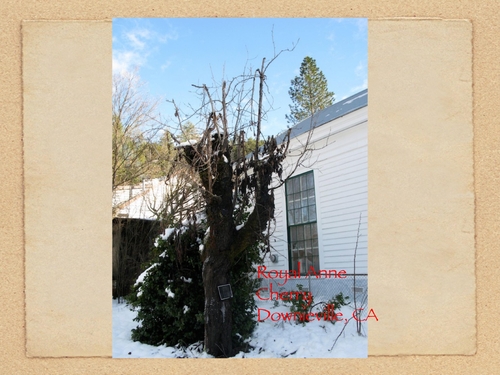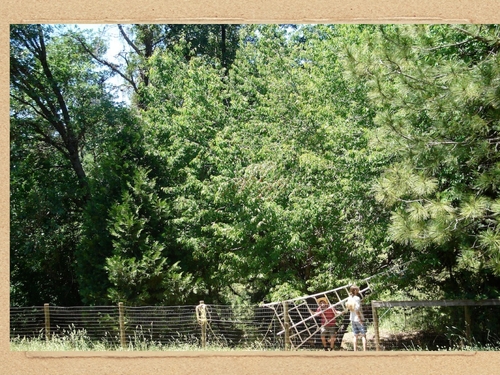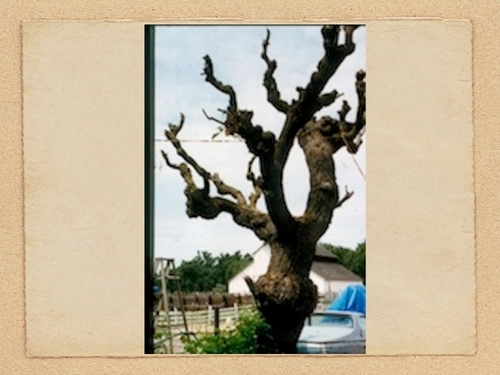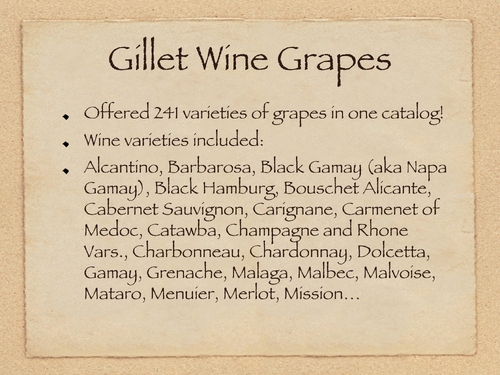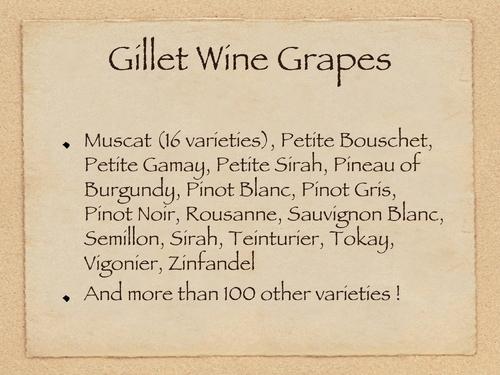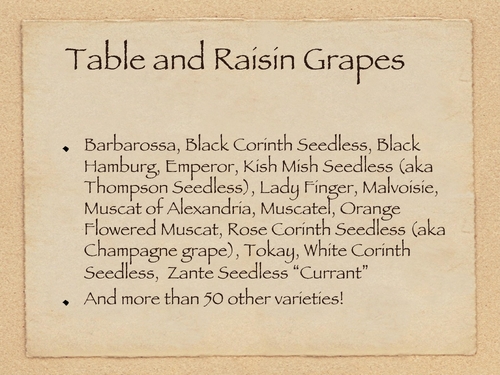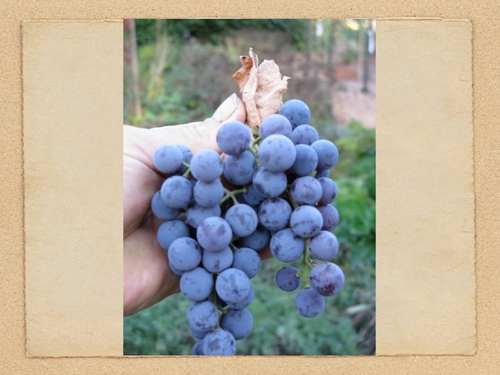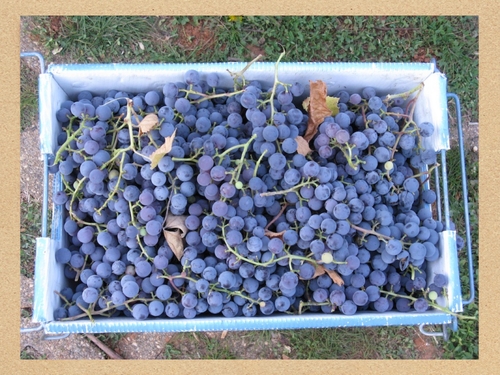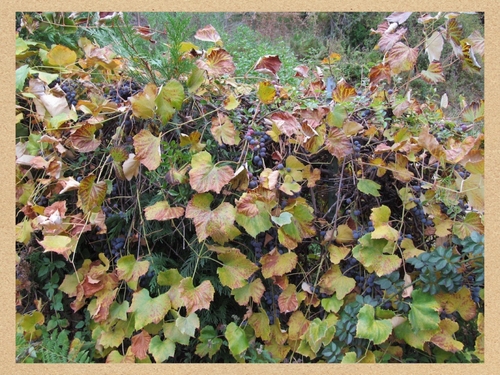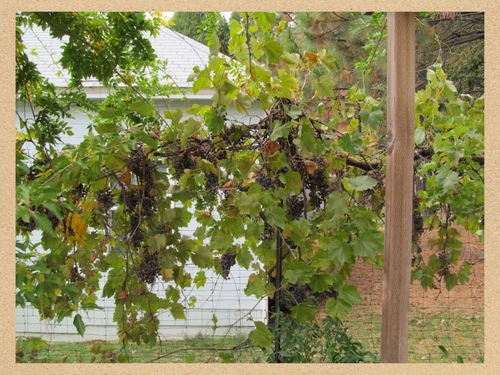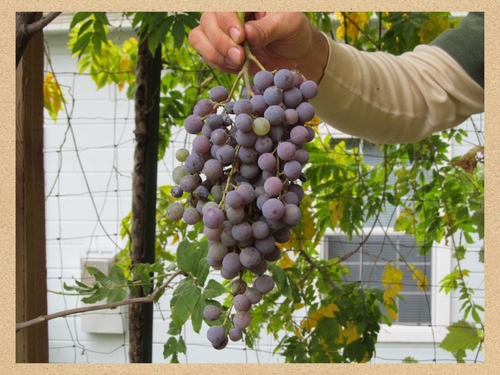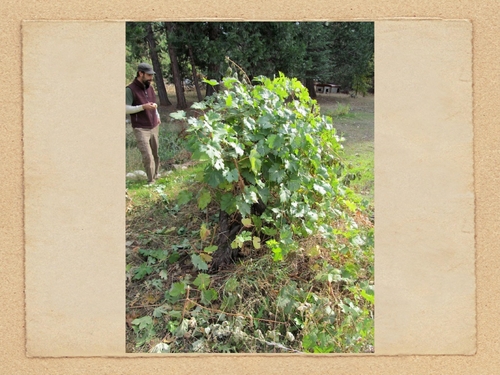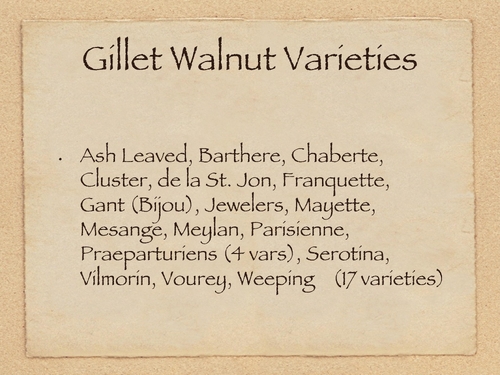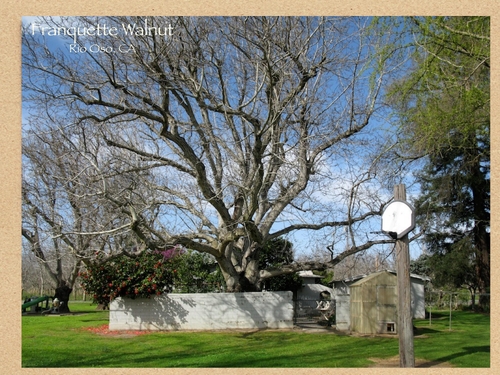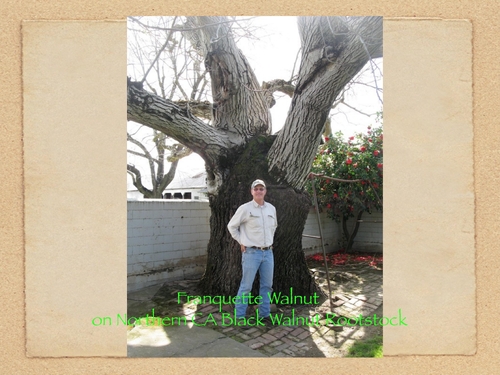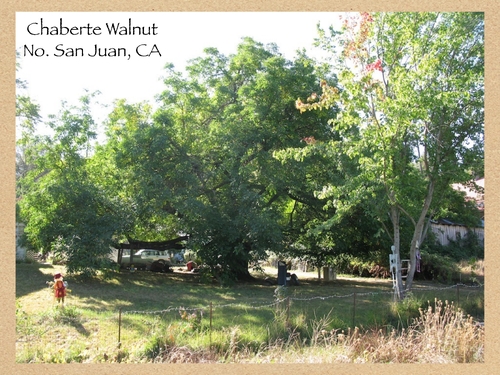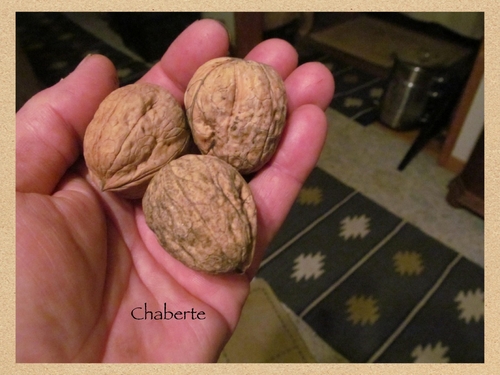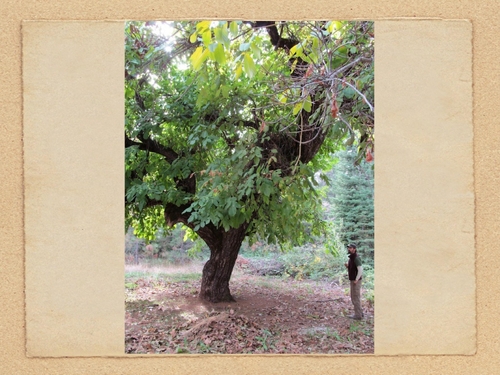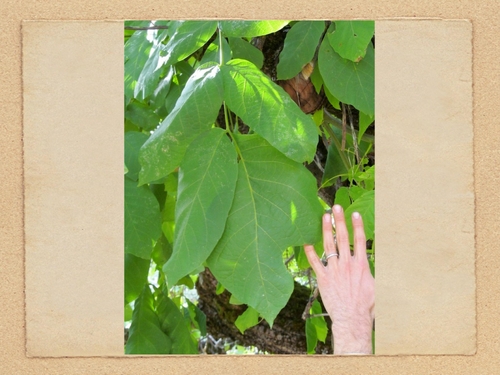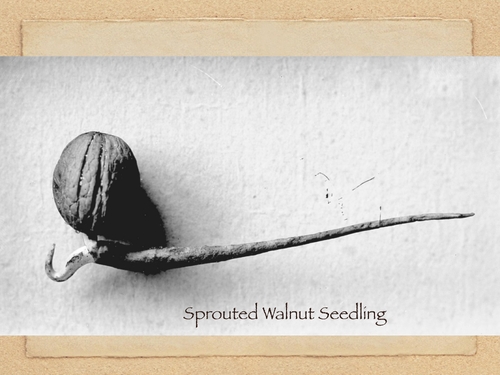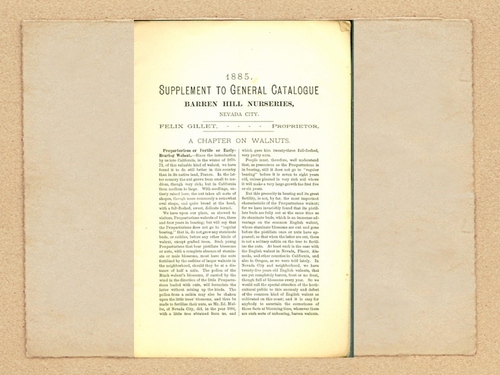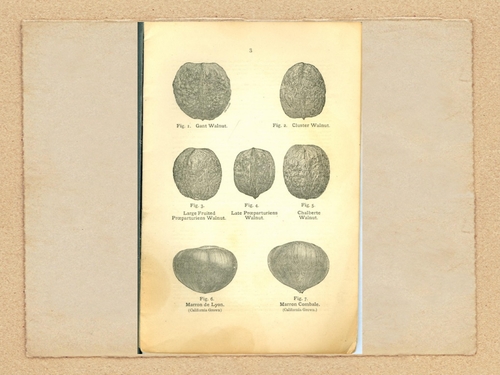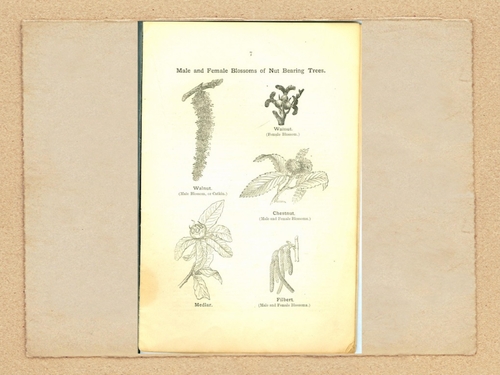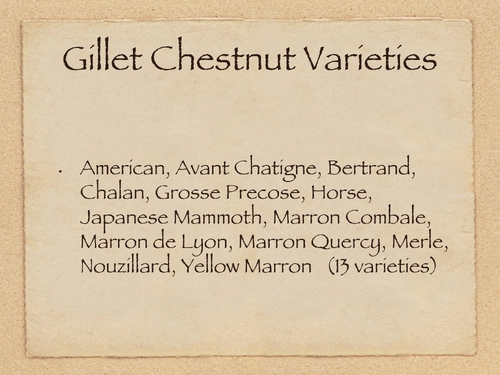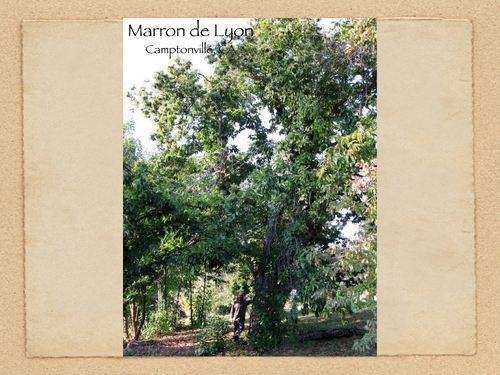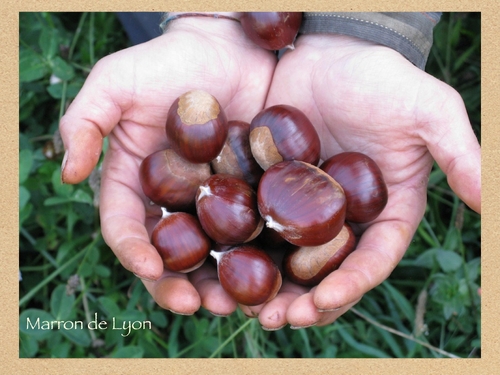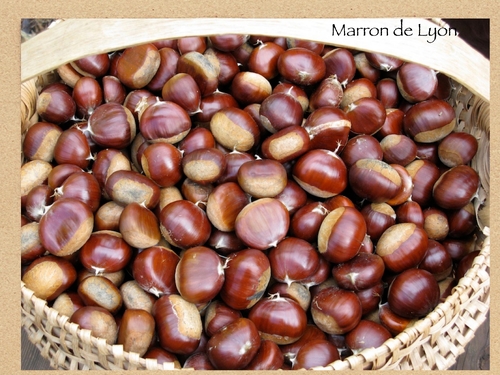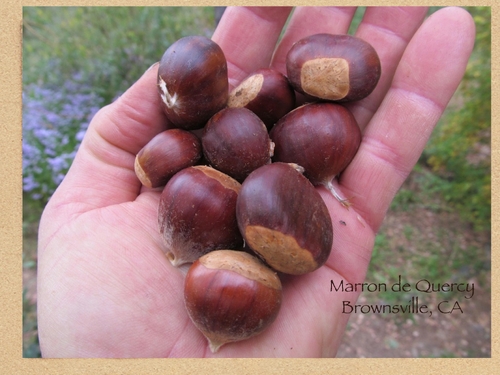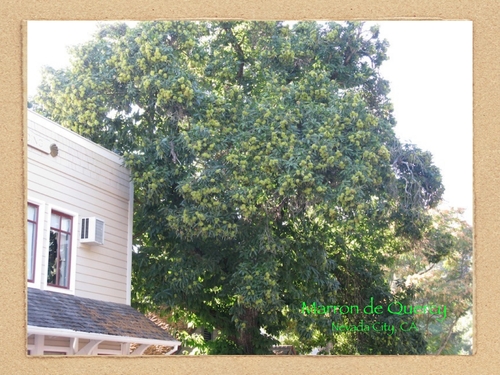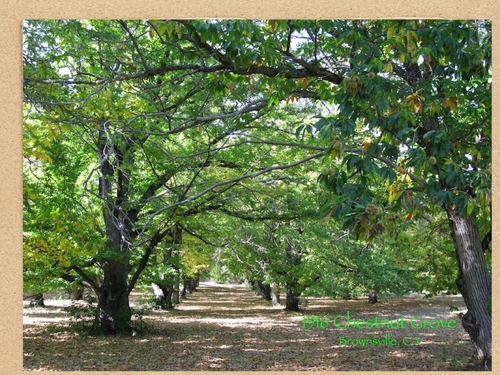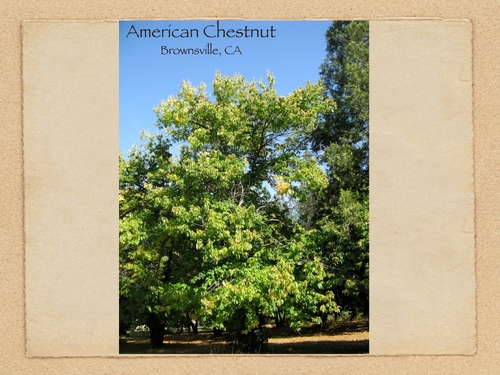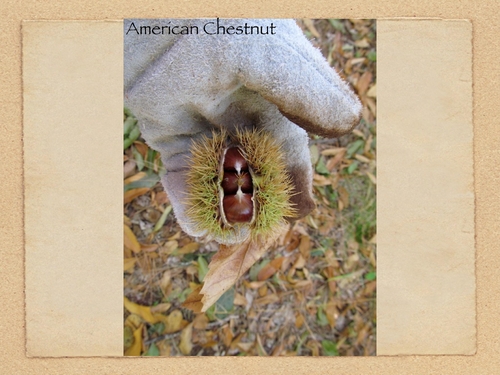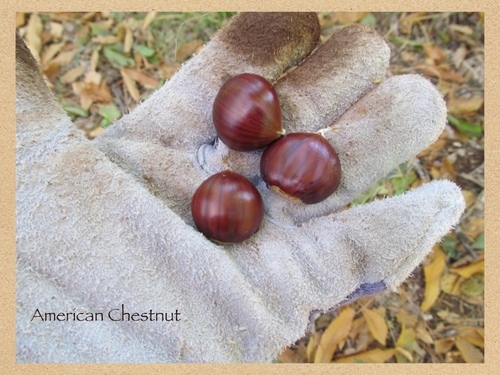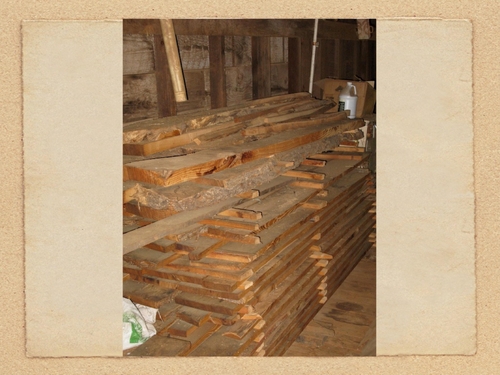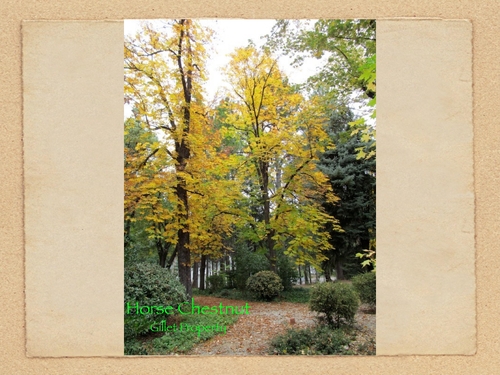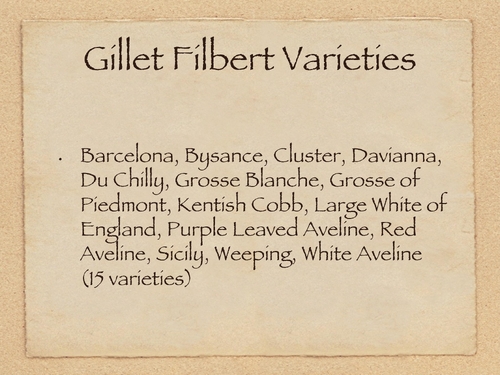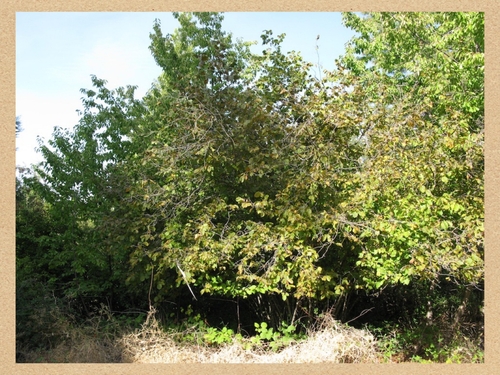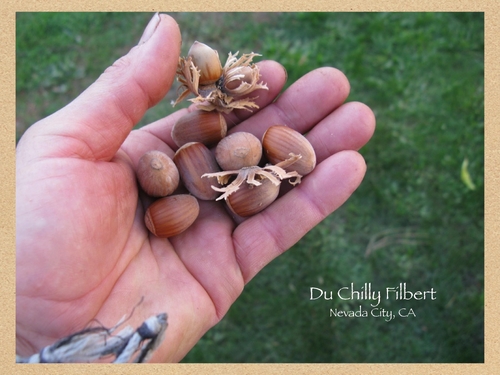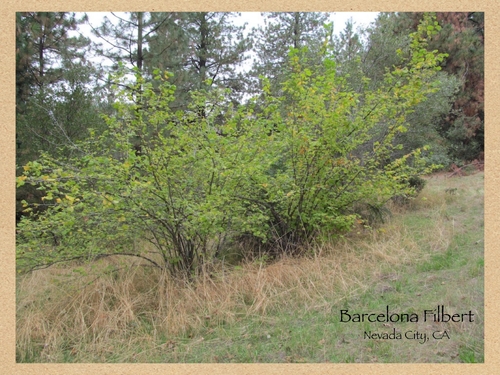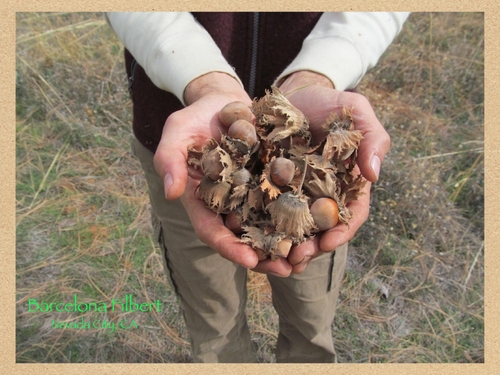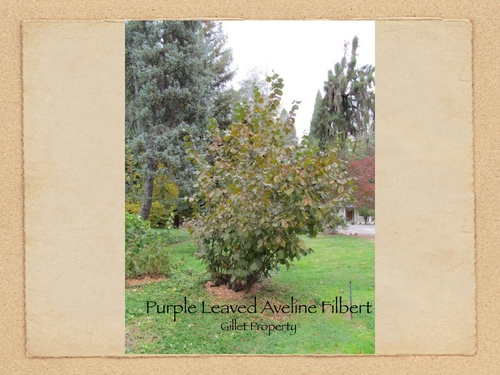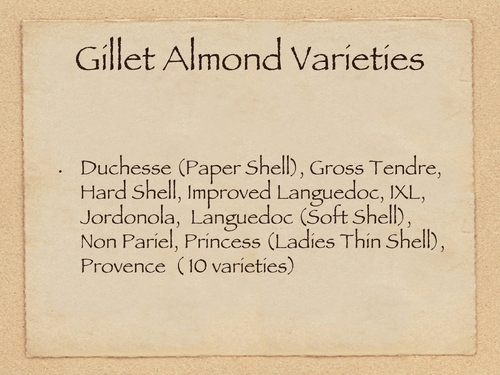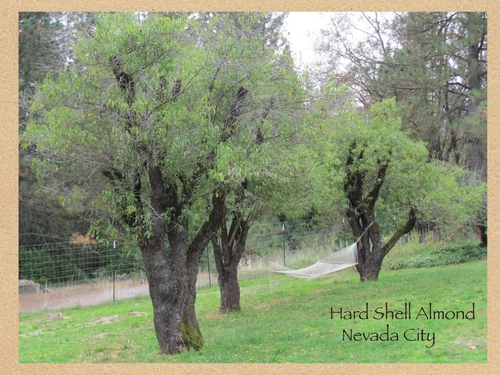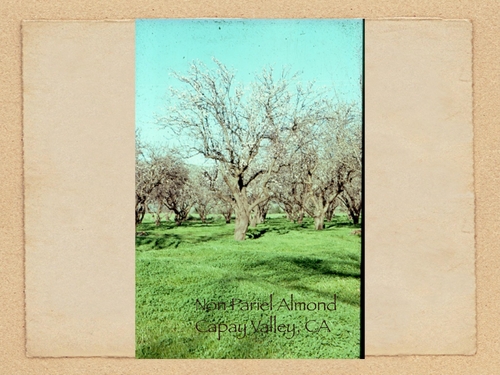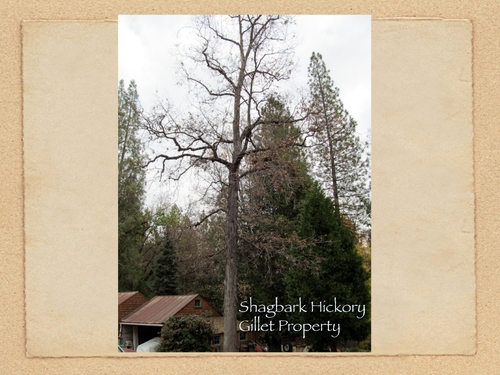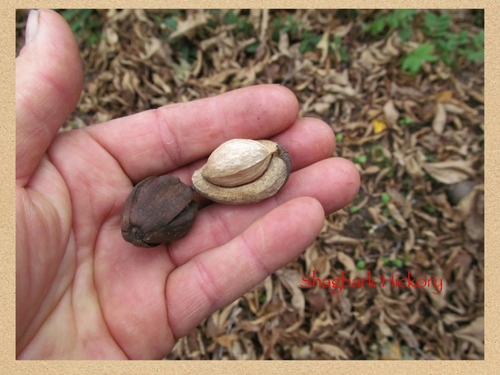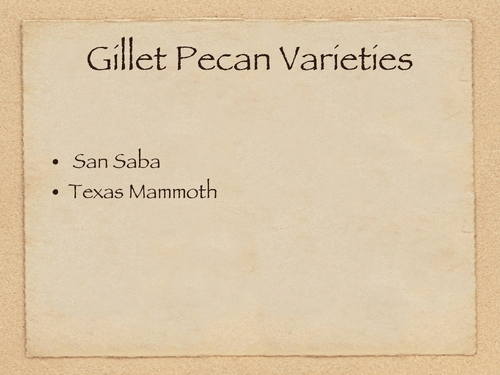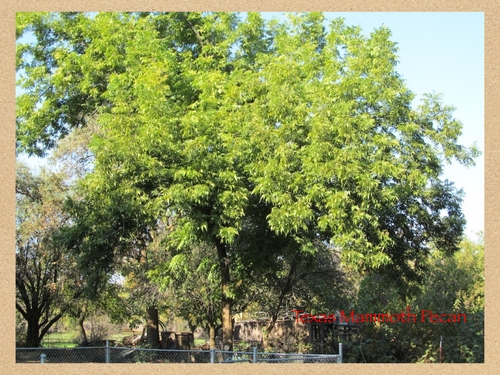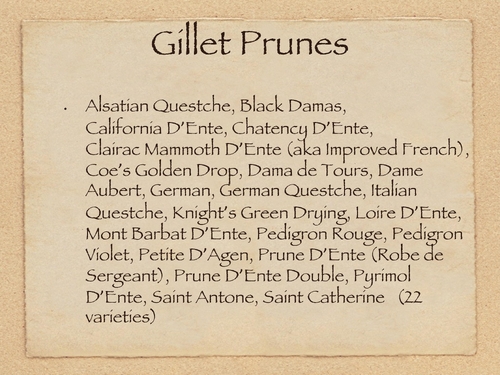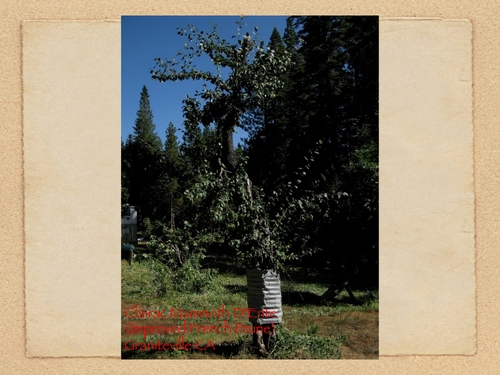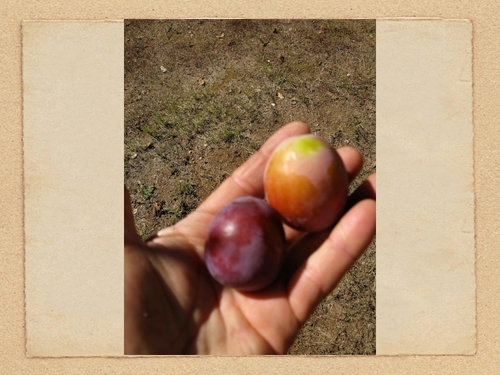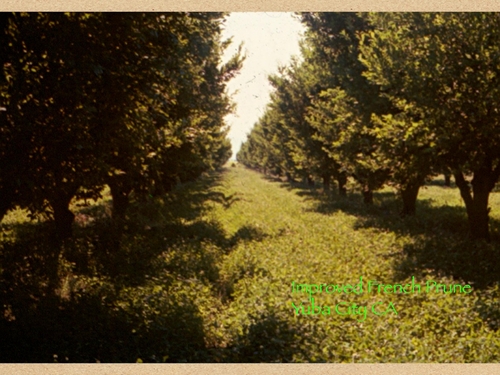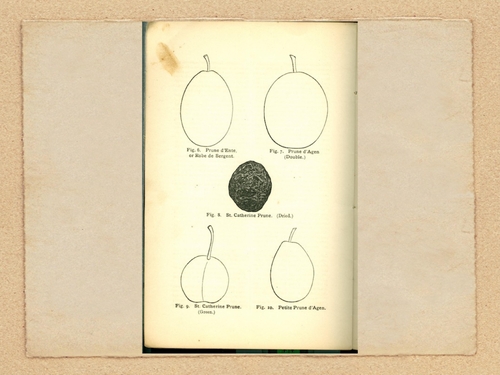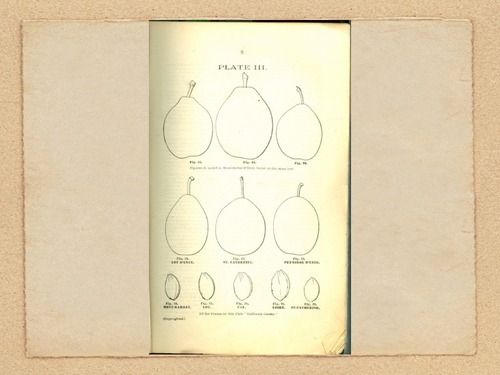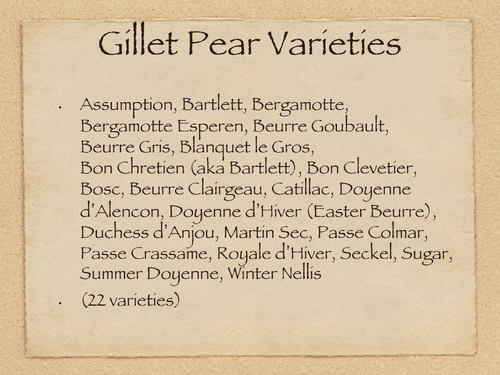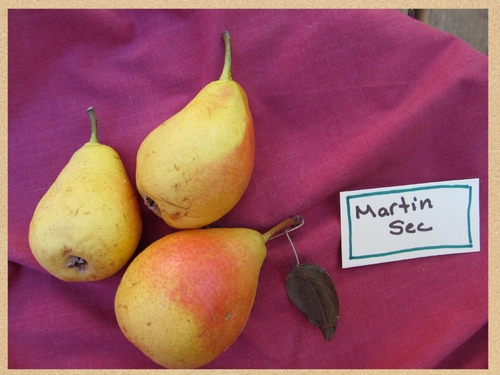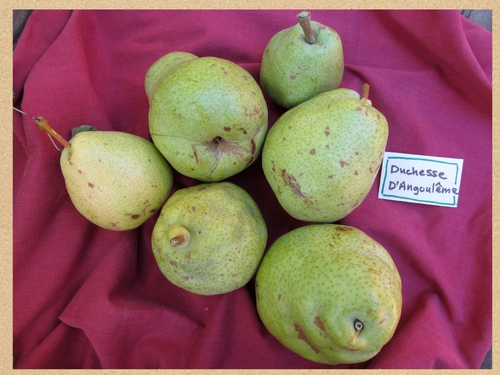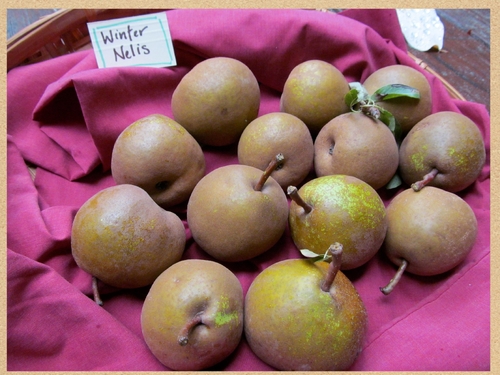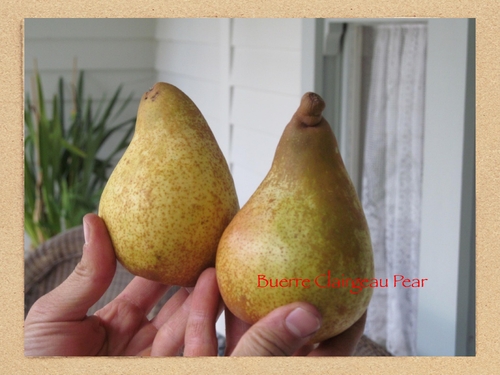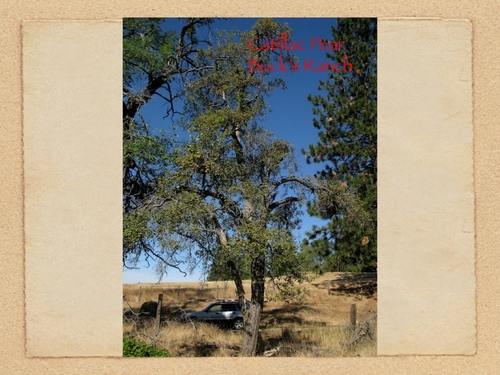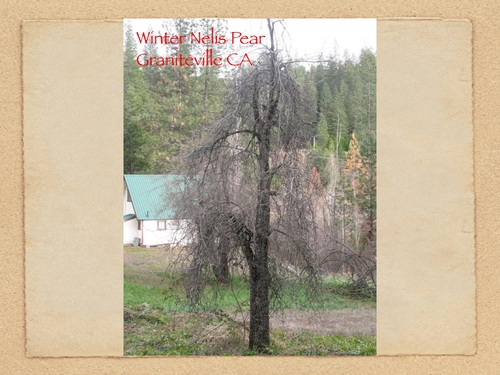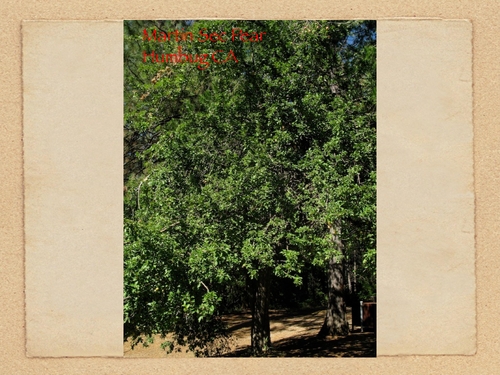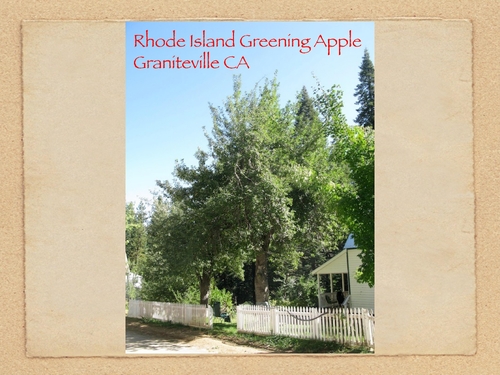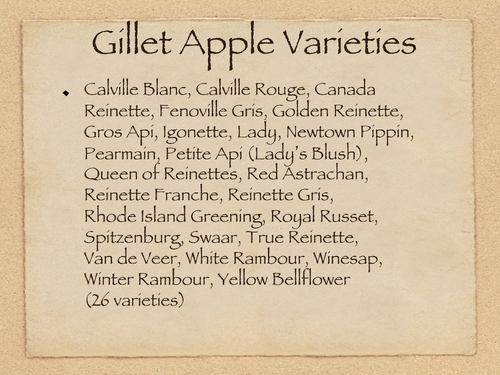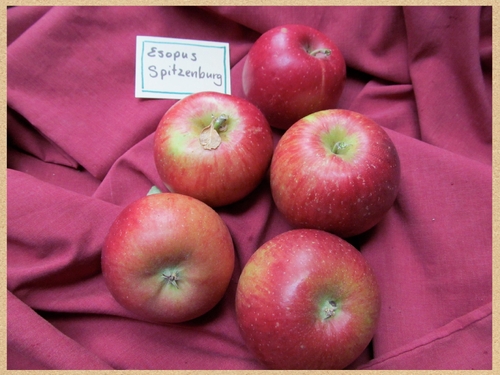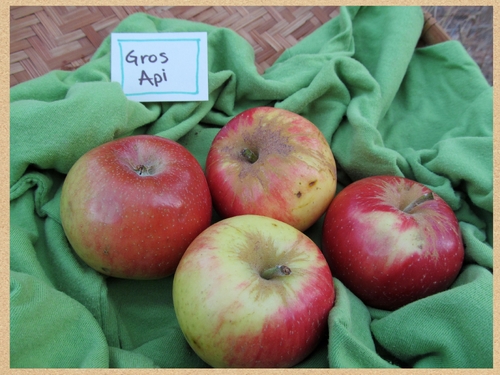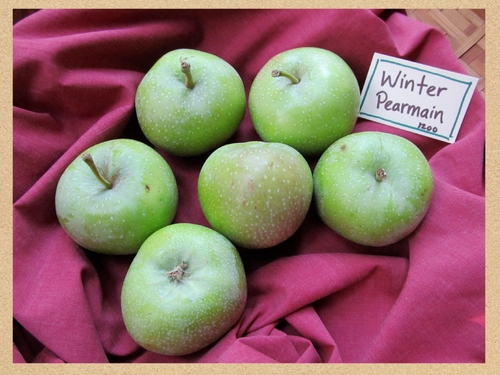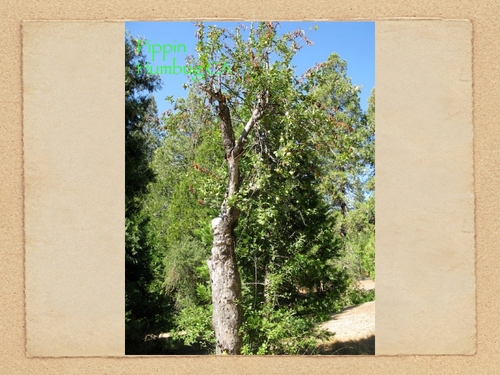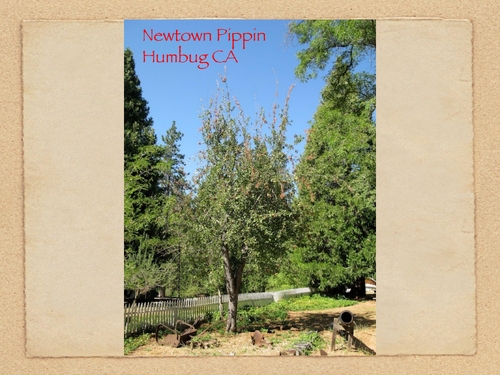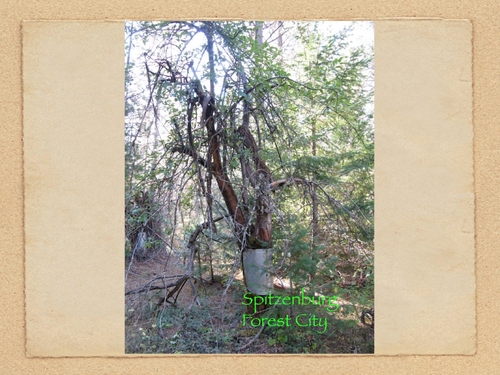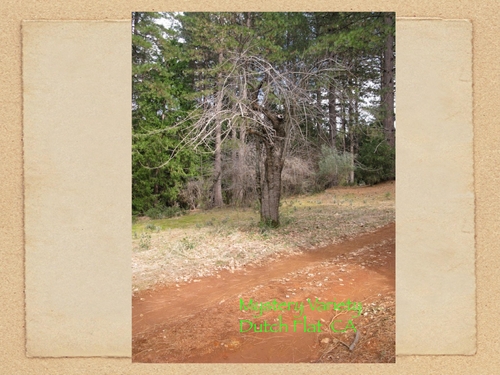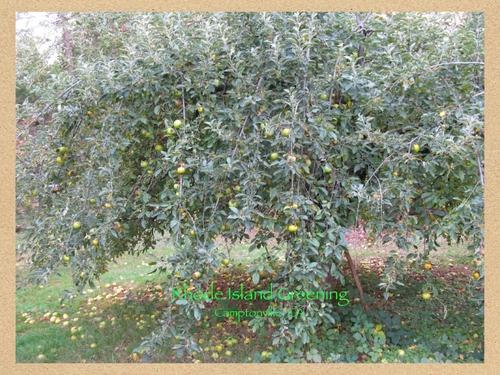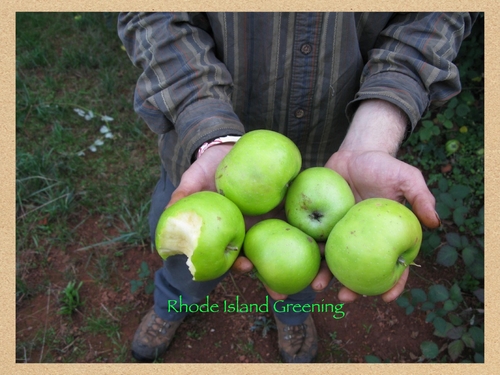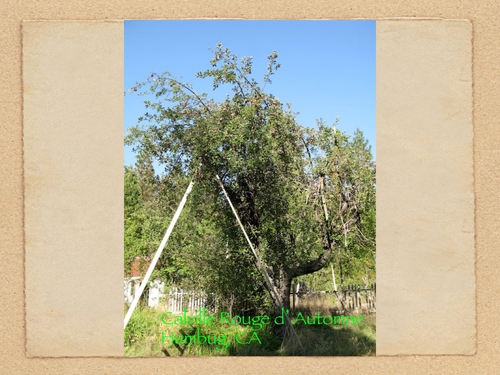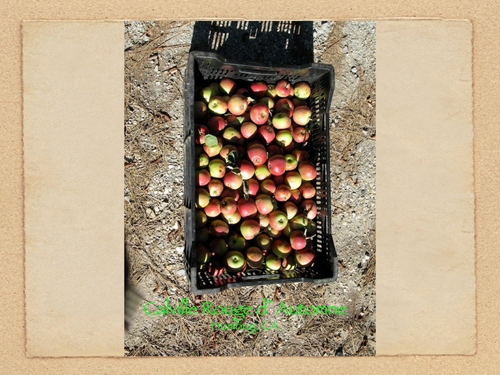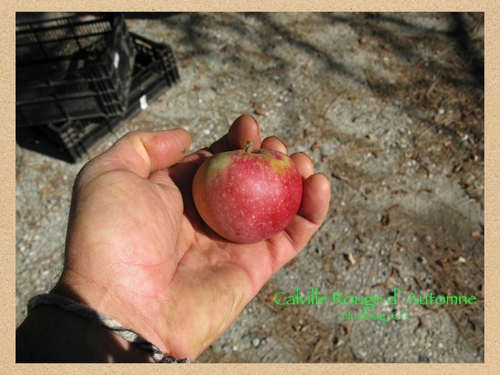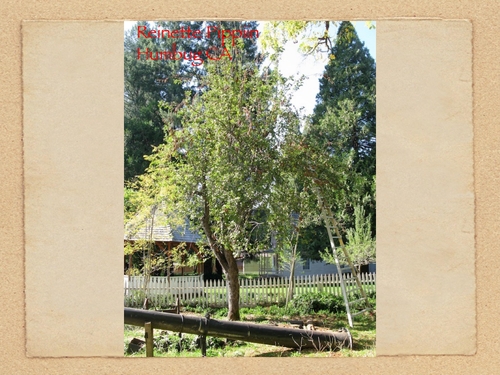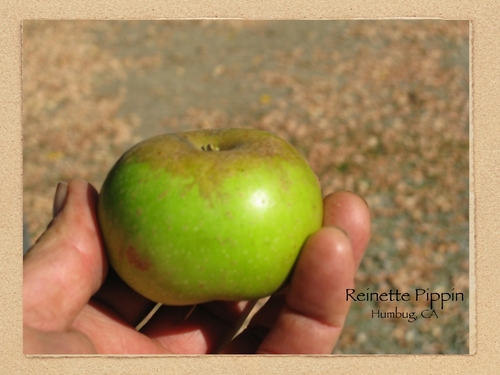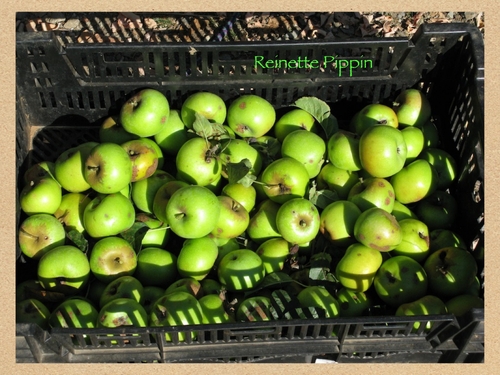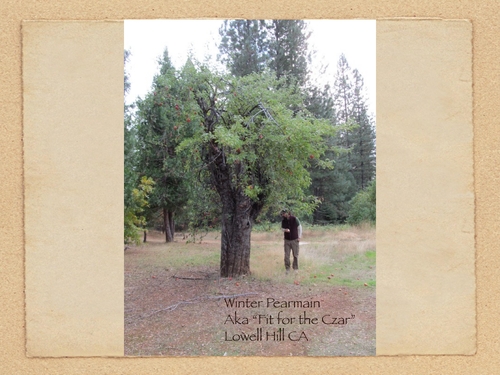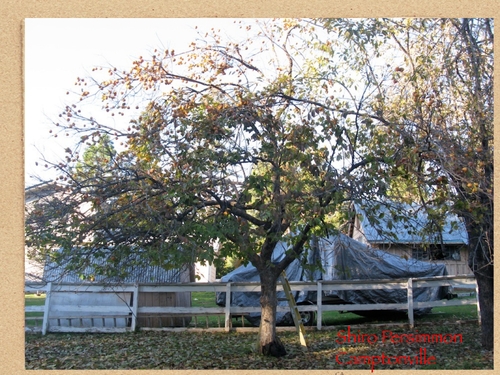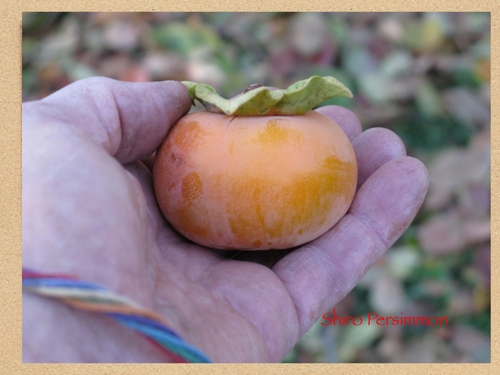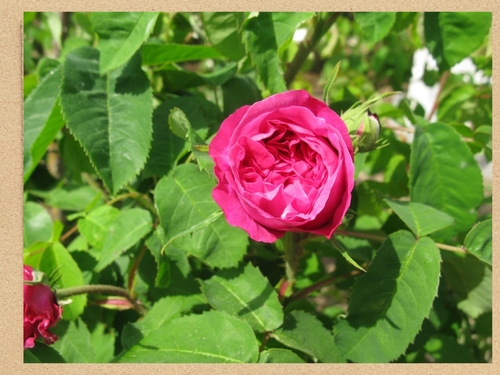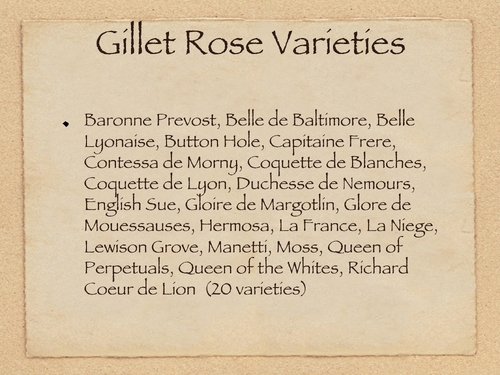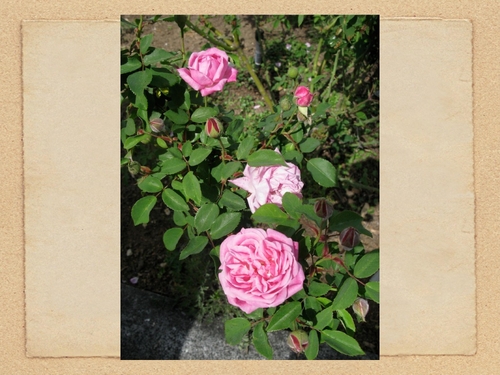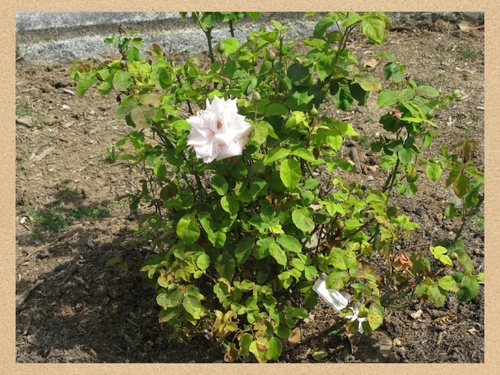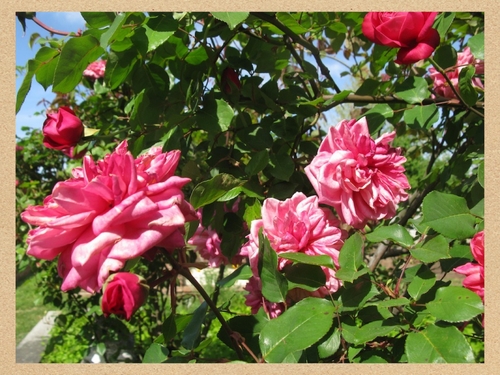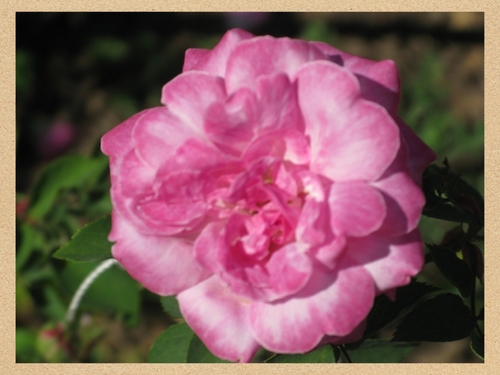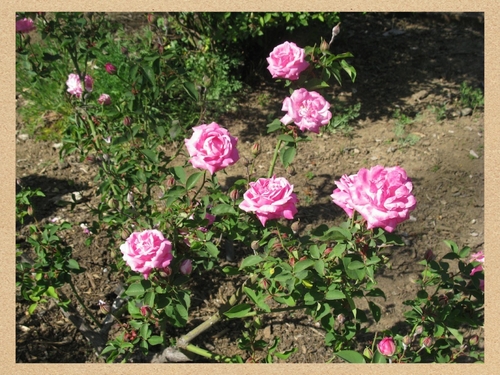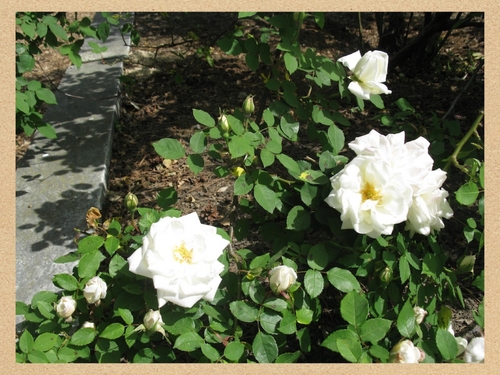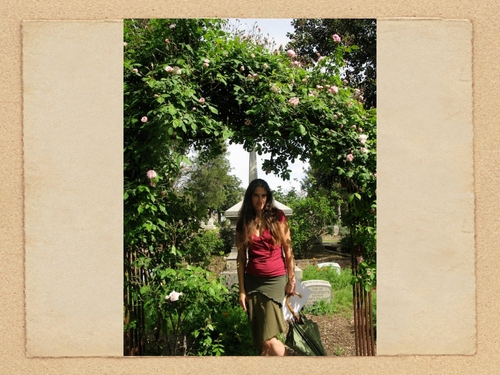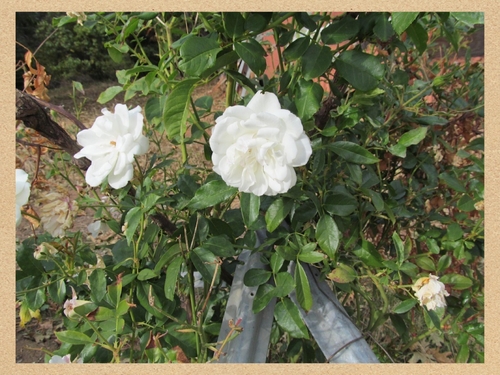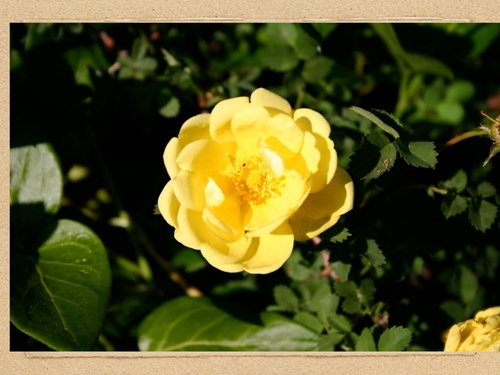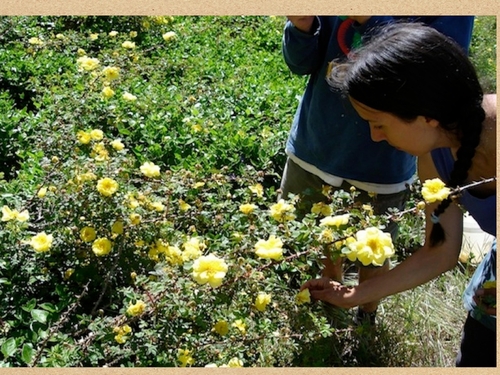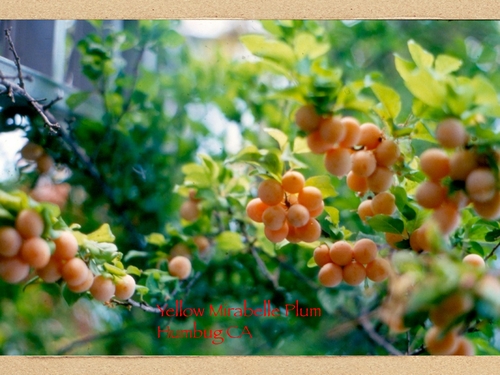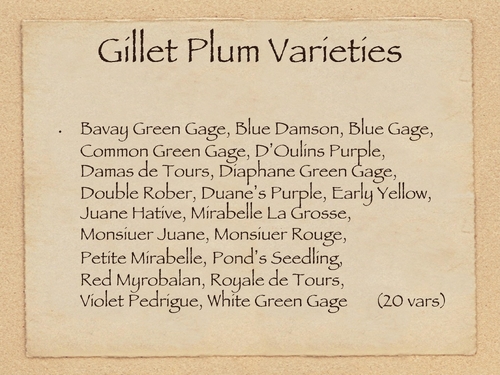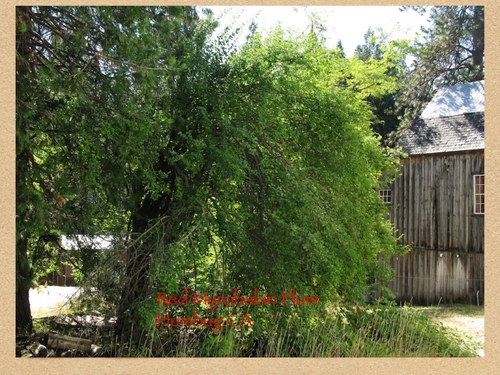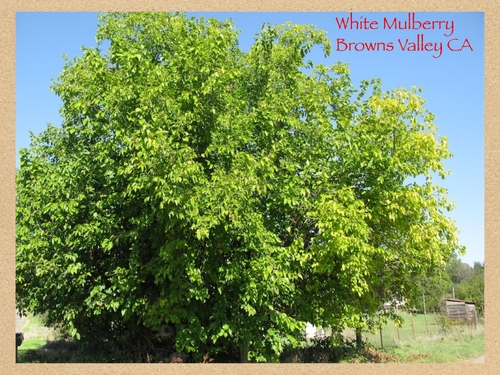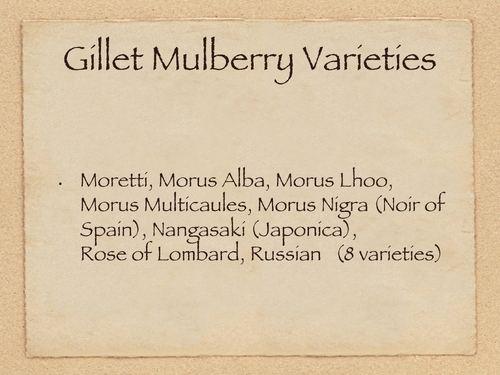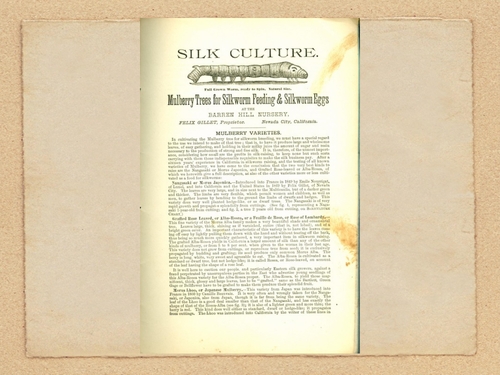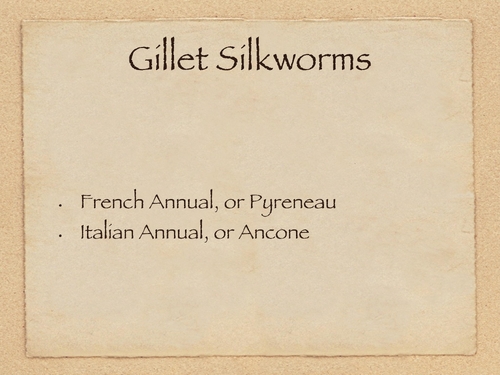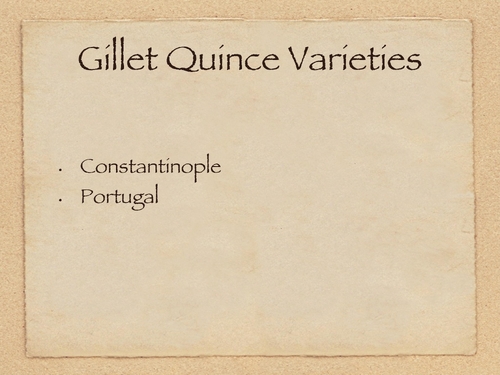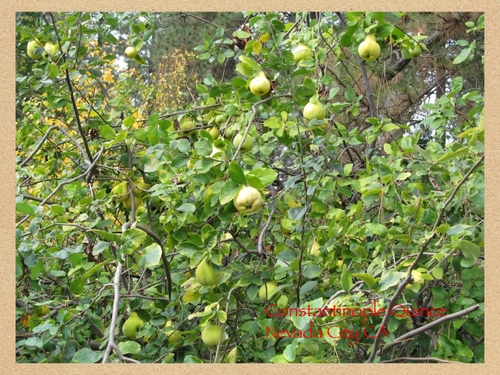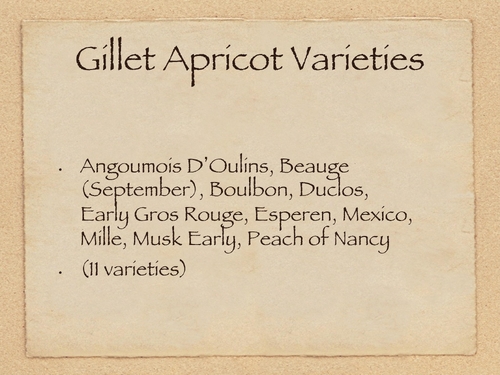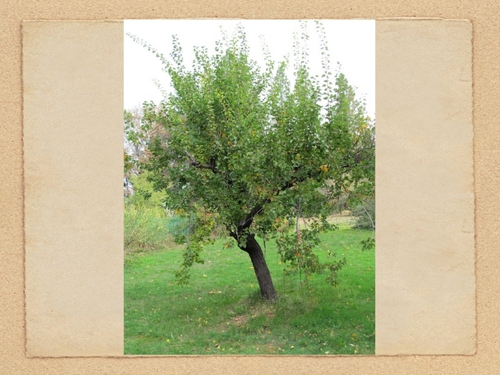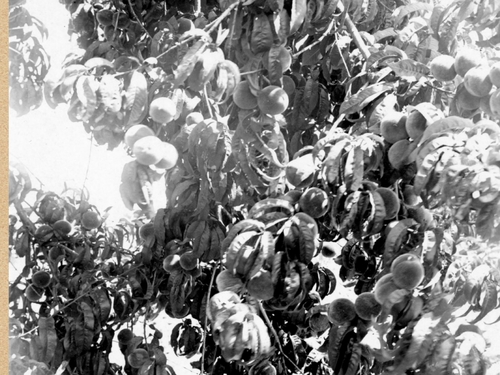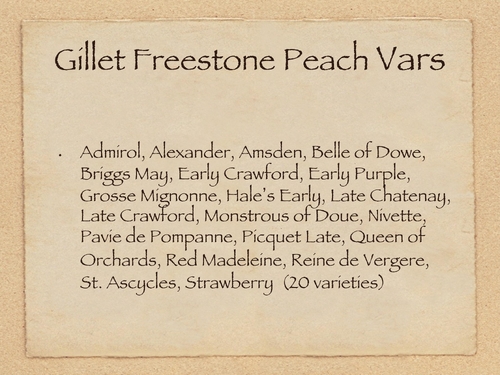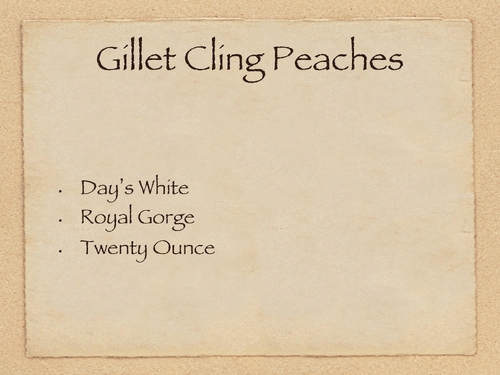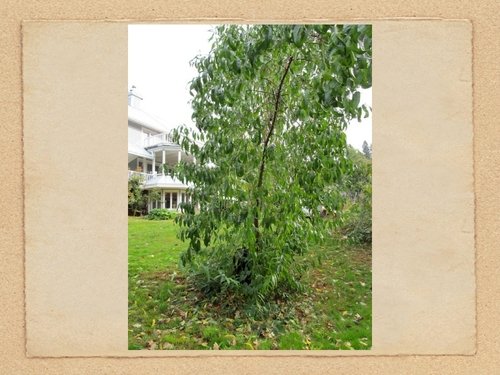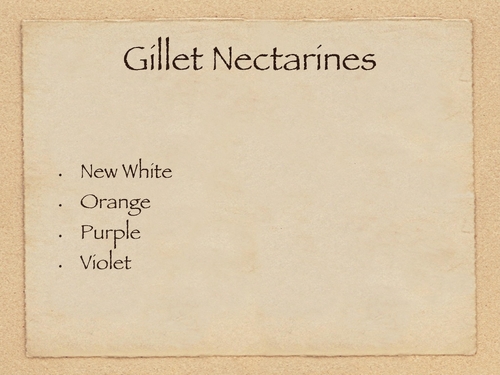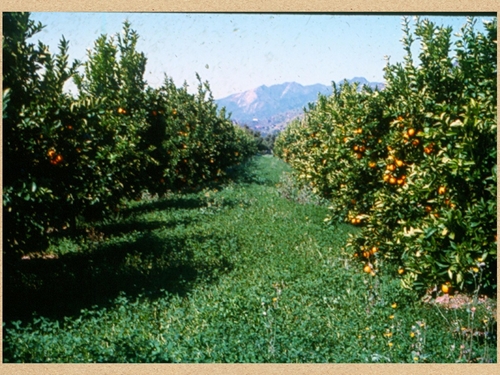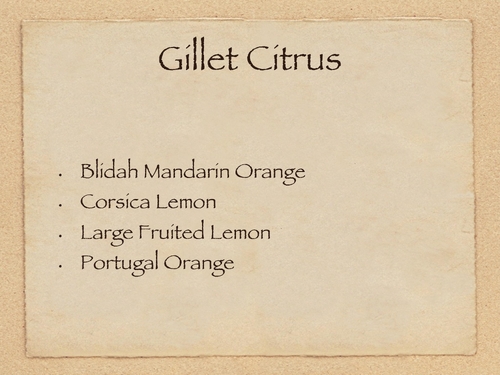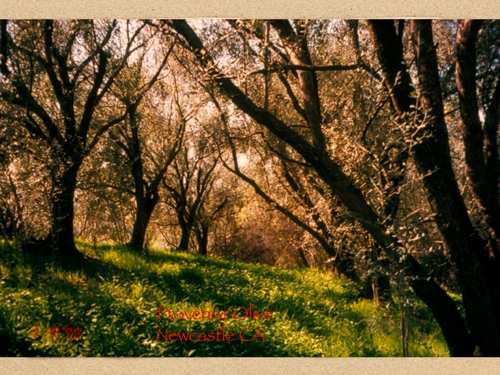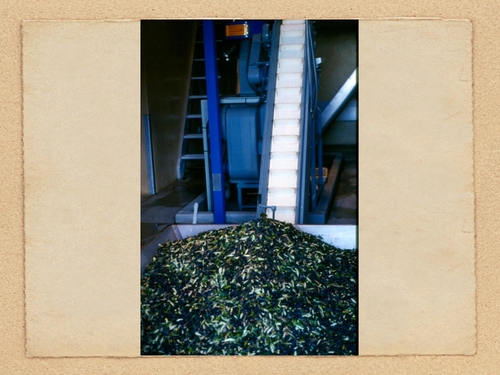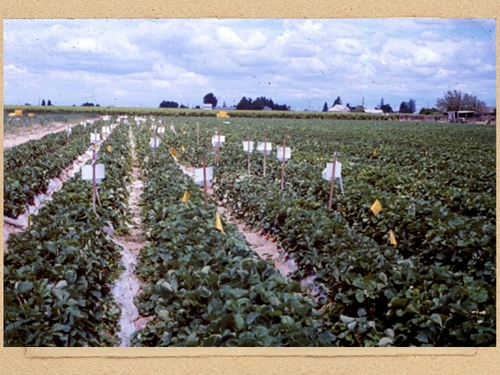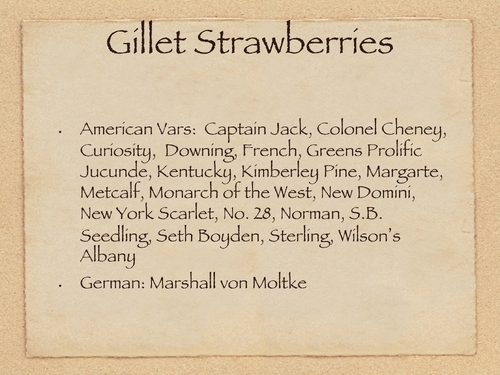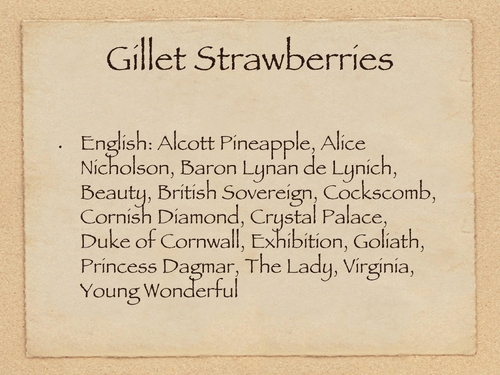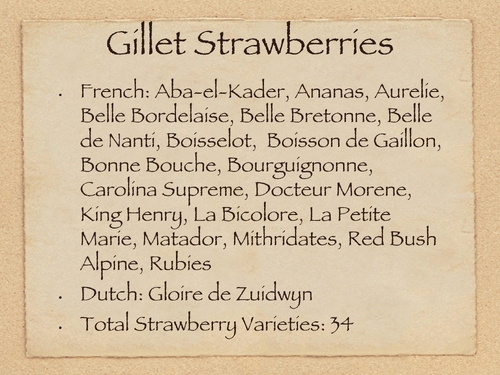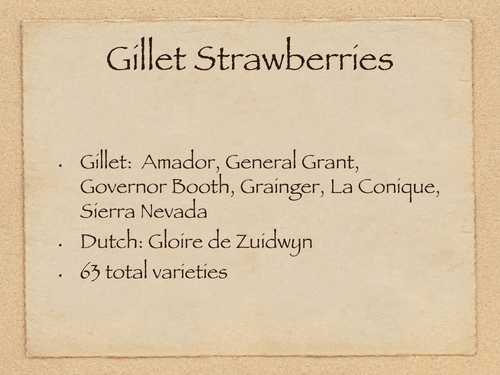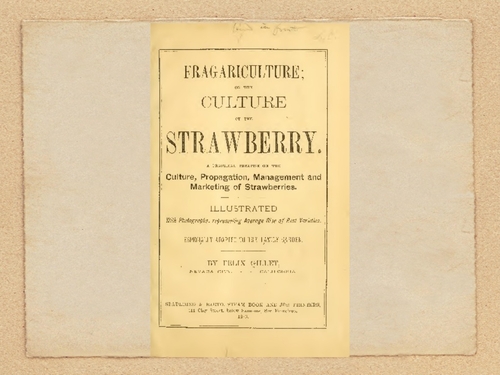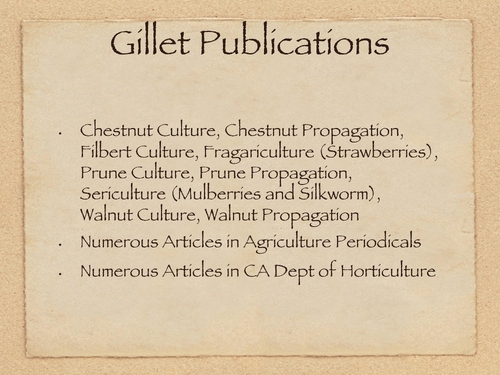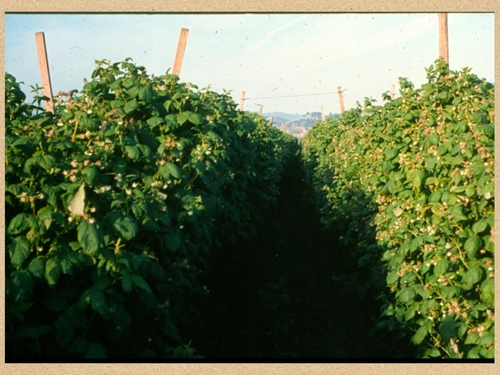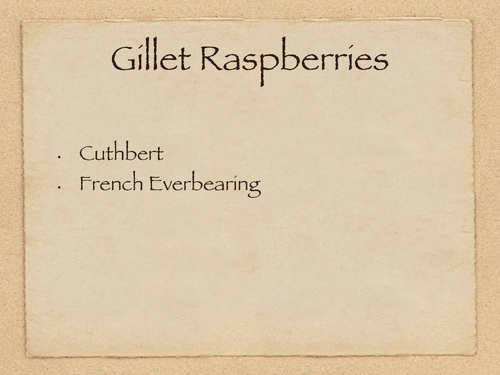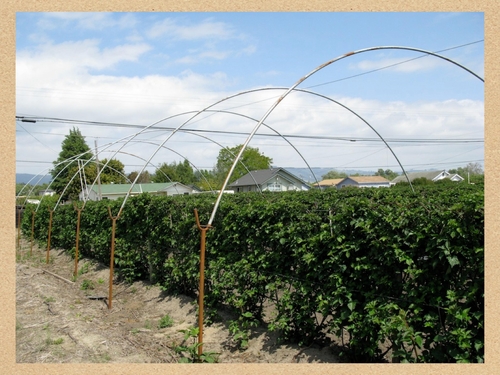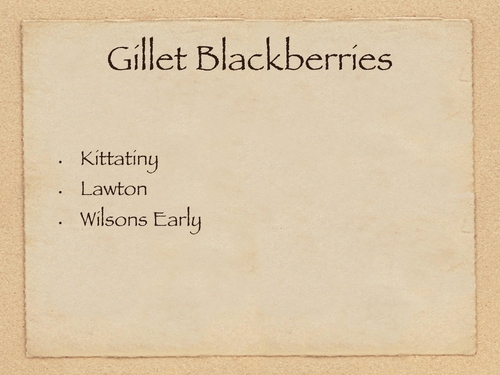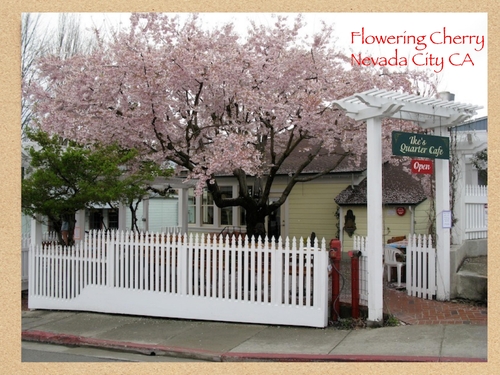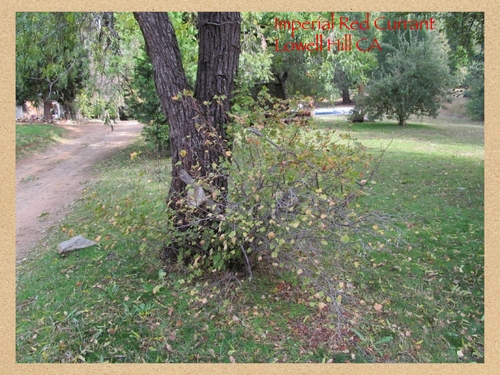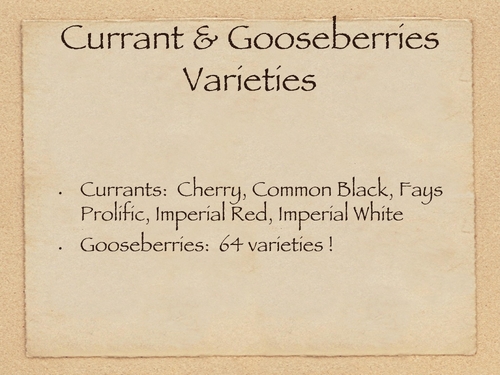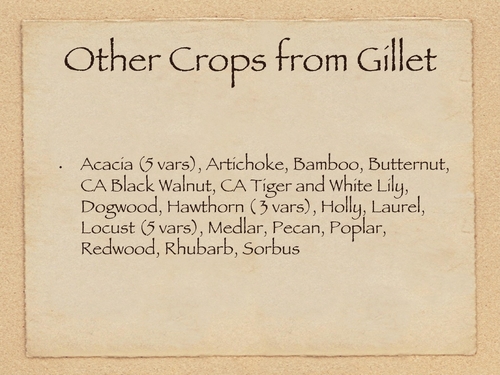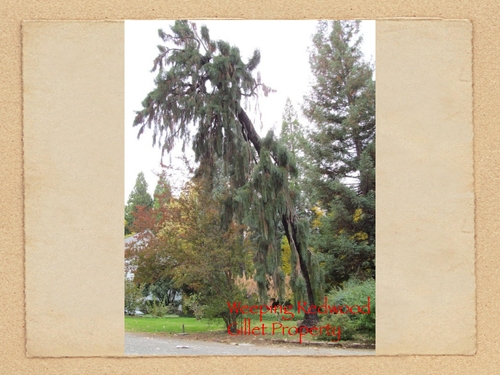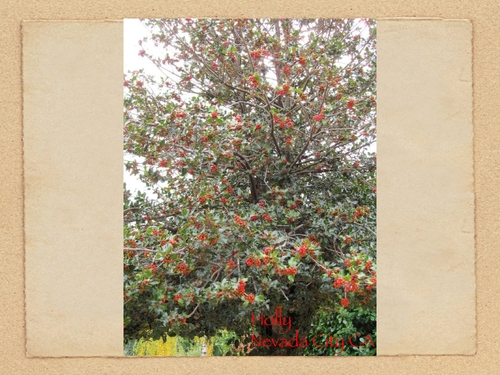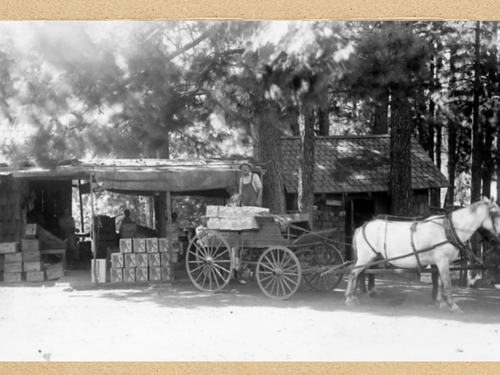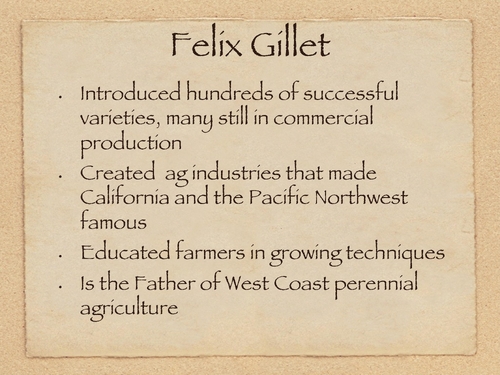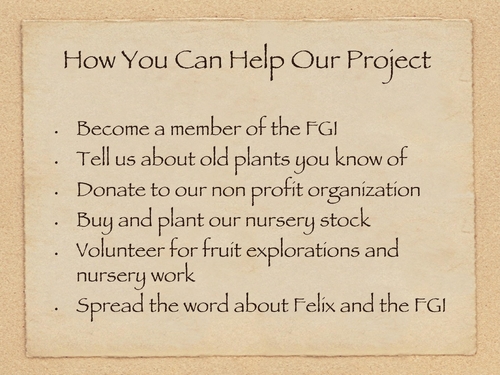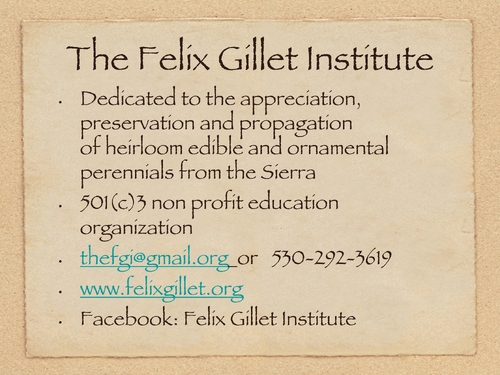Enter a name, company, place or keywords to search across this item. Then click "Search" (or hit Enter).
Collection: Videos > Speaker Nights
Video: 2013-11-21 - History of Felix Gillet with Amigo Bob Cantisano (55 minutes)
In a presentation about Felix Gillet, Amigo “Bob” Cantisano highlights Gillet's significant contributions to agriculture. Gillet, a French immigrant who settled in Nevada City, California, in the 1800s, established one of the first nurseries in the state. He introduced and propagated a wide variety of fruit and nut trees, including almonds, walnuts, chestnuts, figs, and grapes, many of which are still staples of California agriculture today. Cantisano emphasizes Gillet's horticultural expertise, noting his ability to coax growth out of plants in poor soil conditions and his extensive writings on agricultural practices. Additionally, Gillet played a role in local politics, serving as a city councilman and contributing to the establishment of the State Department of Horticulture. The Bob's personal connection to Gillet's work is evident as they discuss their efforts to identify and preserve heirloom varieties of fruits and nuts that trace back to Gillet's nursery. The Felix Gillet Institute, founded by Cantisano, aims to educate the public about Gillet's legacy and promote the cultivation of these heirloom plants. Cantisano concludes by highlighting the importance of preserving these resilient and historically significant plant varieties.
Author: Amigo Bob Cantisano
Published: 2013-11-21
Related Items:
Published: 2013-11-21
Related Items:
- Felix Gillet > Felix Gillet Institute Information (November 2013)
- Nevada County Historical Society Bulletins > Volume 016-4 - October 1962
Full Transcript of the Video:
Nights raffles and provided by your board of directors and a refreshments by Desmond Gallagher, Bristol of Anacast, and Kathy Wilk-Harks-Barn, and we appreciate that pretty much. Everybody got the raffle ticket? If not, Wayne's in the back willing to accept your dollars to do that. Coming up next year, we have already booked all 11 months with presenters. We had some pretty good topics and speakers. January is Lizzie Lowry talking about the Civil War Europe clothing, and also in February, Karen Henderson, who's a linguist, and will be sharing with us on the mighty language. I'm going to, this fits with introductions of Migos Bob. I think everybody probably knows him. We want to get right onto the program, so Migos, come on down. Okay, yeah. Thank you. I'm honored to be here. I travel all over the world as a speaker and almost never spoken in California. So I, there's a lot to talk about Fios-Chile. They hadn't mentioned to me I have 200 slides or we're not going to look at them all. Obviously. Because it's a long-stable midnight. We just talk at Nazi. But there's quite a bit of pieces about Fios-Chile which I am not going to go into tonight. You actually had a whole bunch of tentacles into our community. The part I'm most personally interested in is his agricultural endeavors. But in addition to that, which speaking of the solar library here was one of the pictures that Pat made for us that we're using. In addition to his agricultural work, Fios was a two-term city councilman. He was a founder of the State Department of Border Culture which is now the Department of Food and Agriculture. He was an extensive writer both in English and in French. And did sociology writings as well as agricultural writings. And a whole bunch of other things. A real interesting character. He was the Nevada County Chair of the Workinglands Party which seemed to be their main turn of the century platform with all the Chinese out of the Nevada City or out of California rather. And he's also attributed with the efforts of the Nevada City to purchase the reservoir that's at the top of North Bloomfield Road which ended up which was a private reservoir which ended up becoming a water source for the Nevada City to provide water in the town. The town stopped burning down. Before that they had to pump the water out of Jerk Creek and of course anything that was up above Jerk Creek had no pressure on it for as long as many times. They put a pressurized line in from that reservoir which was fed by a mining ditch and town stopped burning down in. As a result of that they moved the City Hall from down at Jerk Creek which is where the building is initially freeway that's been oxygied by the restaurants. That's where it currently is in July is recognized as a plaque. Anyway, lots more stuff about him I could talk about him for hours because he did a lot of different things. I am a farmer and a farming activist and I've done a lot of different things in the lay of the agriculture and Felix July is my personal inspiration for a lot of what I do but I didn't know that. So here's the gentleman born 1835 in Rowsport, France and migrated here in 1859 or 8 depending on who you read he opened one of the early barber shops in Nevada City in Pine Street and as most small farmers maintained his primary career while he established his agriculture career he went back to France in the 1860s and learned about the nursery trade and made contacts came back here bought a piece of land up on Aristocracy Hill which is off of Nevada Street where the nursery street is 16 acres of land in 1871 started his nursery and kept his barber shop going until the 1880s as a classic just like I have an outside job to support my farming addiction the same way it was back in the 1870s So Felix started what turns out to be one of the first nurseries in California called the Barron Hill Nursery actually I'm hoping to get a picture transcribed that I found now that's at his original house that shows that you're rich with the property when you bought it it had a single pine tree on it it had been logged over and probably mined as well and so he got it for a song but it had water access to it and that was probably one of the most important parts but one of the interesting things about Jolay is that he recognized that we don't have that great gardener out here knows that and yet he could figure out a way to coax growth out of plants and if they grew well in Nevada City on poor soil he was pretty clear that they were growing other parts of the country so he brought this he ran this nursery until 1908 and there are different versions of how he passed but he got an infection and died from I like to believe he was pruning a tree in the winter and fell out of it in January of 1908 he passed and a few citizens of Nevada's county at that time was on the front page of the obituary so he was highly respected at the front page of the union that is so from 1871 to 1908 he ran his nursery and then Charles Parsons took it over a couple years later from Jolay's widow and ran it in his son until the 1960s and in the 1960s it was the oldest operating nursery in California because one of the very first nurseries there was one previously in Nevada County and there was one major one in your Fremont called California ownership but Jolay had a real interesting piece of the puzzle being French he had these connections back into France which at the time and still to great degree was the culinary capital of Europe and he brought in these plants which he selected or learned about from the nursery people apparently we still don't know the details of that how he did this but he brought plants here originally by bringing them around the horn on show and you'll see in Mr. Parsons description about how that happened he handed out to you earlier and basically brought these plants and propagated them planted them out in a wide variety of areas and got feedback from people about how they grew and as he learned more and more and then he evolved his nursery and continued to do things in 1967 when Parsons passed on the nursery closed but the legacy of the property was maintained because Mr. Parsons sold it to a couple that kept the house intact I'll explain a little more of this but what Jolay did which is the part that's most intriguing to me is many and I'm going to show you this as quickly as I can many of the things which we take for granted today as crops of California or Oregon or Washington or Idaho Western agricultural areas actually came to the West by Felix Jolay he brought them here, bred them, propagated them and got farmers and gardeners to plant them so why was people interested in this well of course the miners came here and the miners themselves needed to be sustained and so agriculture sprung up to keep the miners happy and many miners brought plants with them and in our work we found a number of plants from miners from others besides Jolay but then Jolay came here and spurred that process on by becoming the local resource so if he wanted to plant an apple, a fig, a cherry a peach, a plum a chestnut, a walnut, whatever or he wanted to have a orchard as we found certain orchards then here's the local source and it turned out that he was a wise guy apparently because many of the plants that he brought here are either the exact same varieties we grow today or they're the parents of the varieties we grow today and I'll show you just as we grow along so he's the primary source for all these plants so things like almonds walnuts, chestnuts, filvers, prunes the European plums, wine table the raising grapes, strawberries, pears cherries, figs, apricots, peaches, coins apples, roses, prunes, gooseberries and most of other things if you eat those things you are connected to Felix Jolais there is no doubt about it he is the guy that brought the majority of these plants here now what we've been doing and I'll show you is no longer so this is Felix's house which is still standing and it's been rebuilt and refurbished and that's set by one of the Felix Jolais Institute doing a little evaluation this is actually the back of the house was an attached solar green house these French doors provided heat and air exchange and that's converted into an arbor but this is actually, we have a picture that shows Felix standing in the back of this greenhouse propagating we're not quite sure what it looks like maybe walnuts in glass cylinders which I get to find another one of those but for some reason that was his preferred plant for propagating technique at any rate he had 16 acres of plants that is a tremendous amount of nursery production right now our little nursery is about a quarter acre and it's got about 1,500 plants in it so if you take that quarter acre and multiply it out you can see the quantity of plants that he provided so and this is just one, this happens to me that one actually grows right there on the house, in front of the house that's the player go and my fiance Jennifer Bliss is out in the back room there is actually becoming our resident expert on identifying these old varieties which is extremely challenging and frustrating as she told me two in the morning when she's trying to figure out these different habits that she's been looking at for our eyes crossed but we have been trying to both find out what these old plants are and then try to evaluate them and the best of them or property so this is just one example of so when I first went to this property in the 1980's three or four I noticed that the entrance was a plaque and it says for those of you who can't read here lived and worked in Strelat a Frenchman by birth, an American by adoption born from 1871 in 1908 through whose vision and perseverance the horticulture of the world was enriched by the propagation and culture of Waldox, Filbert's, Chestnuts and Prunes the commemoration and that was where this thing was set by set March 1933 by the Women's Civic Club in Nevada City, California so when I drove up to this place for the first time, which I had been I learned about from a customer and I'm the man that started Peaceful Valley Farm Supply and people used to come out there and all the time and buy trees from me I was profiting all kinds of things I was sure not to be a messenger of trees but in military times and someone said to me, did you know that there was a nursery in Nevada City and I said, you know, I know nothing about it and I went to the nursery and lo and behold, there are a couple of pillars, one of which has got this on it and I entered into what turned out to be now, well, an even longer odyssey so my part of this the part I brought to this conversation is I know a bunch about agriculture and apparently other people who did history didn't know as much about ag or hadn't been around as long and didn't recognize all the contributions they did to agriculture but so in 1970 Farrell didn't know that property at the time but I ended up on Bucks Ranch Bucks Ranch, those of you who know that is what Orleans Flat is one of the mining camps hydraulic mining camps in the San Juan Ridge I ended up at Bucks Ranch in 1970 driving down this dirt road with a bunch of my hippie friends I bought this property in 1970 on the Mill Fork and we were 12 miles down a dirt road and then you open up out of the forest and there it is in the orchard which I'll show you, I had no idea at that time the age of it or its connection to Mr. July except that it has fantastic fruit and if we could beat the bears to it we had an overabundance of stuff to eat but the bears had been eating it apparently for 100 years so they were, and still are, quite wise so that little project with that little experience in my subsequent years I was an abandoned property at that point recently but we would go into those trees and harvest off the apples and the pears and the figs and other trees that were out there and got fascinated by this without knowing anything about the historical context which I'll tell you a little bit so then many years later I started this Felix July project because I've now put 40 odd years into this and I'm totally fascinated by the guy and so what we are doing is to do further research and try to get preservation of the plants and propagate the best of those so that people will plant them back just like people all excited about heirloom tomatoes I farmed before anyone ever called and there wasn't an heirloom tomato that was grandma's thing now that's a big deal well the same thing can be said for heirloom fruits and nuts they just haven't basically been fully appreciated yet and what we have learned and I'll show you is that we have literally thousands of these plants in our counties that have survived 100 or more years and we've got some that are 140 years old that we documented by the fact that they were a part of it and you can see the tree on a picture from a property that was once a stage stop so plants go back a long ways July was 140 years ago in operation so this is what we do and I'll tell you about Felix in a minute so we're doing this project as a non-profit and I'm going to hand out some literature so you can do some more about what we're doing and read about us or go to our website next to Adam in the back we've got the website up this year so we've identified more than 625 locations in the Sierra Foothills comprising over 2,000 specimens and there's probably a lot more than that most of which we have yet to fully identify so those 625 locations are spread between Sierra Yuba Nevada, Placer and El Dorado counties and I've literally just scratched the surface every day oh wow I need it every week someone says did you know about and I go I never heard that place and then you put it on the list we're a long ways away from having identification of all those 2,000 plus trees but we are a bit by bit each year collecting up more information so can we do that Adam raise your hand we're going to meet him in the back and if all goes well a chestnut tasting here at the end at the talk so they work on identification they've got some of the books they use for IDing this is extremely challenging finding out things that are 150 years old what they are but we're figuring it out then we have an educational training program which we're starting up in high schools and we do fruit tasting and education this year our nursery providing only 75 different varieties of plants this winter all different kinds of things that we've evaluated identified and can give you a history connection to where they came from and what the history of that site is to the best of our knowledge so this is living history I mean I love the Bridgeport Grids do not get me wrong but all over Bridgeport are a whole bunch of really cool plants which most people just ignore they just go there's figs over there and oh there's a lot of worms over there and there's a walnut over there and there's a fig over there and they walk right by them but in fact those have just as much historical importance as the buildings do and finally here's the good news State Parks is interested in this subject we're actually doing from State Parks at Malacoc-Diggins a survey of a bunch of the old plants trying to identify them and determine their health and what they need to survive and in fact we're actually getting the ball rolling with the intent of getting the State Parks and other public agencies really interested in these heirloom plants which are just as viable and important as are the old buildings but they have been neglected but the cool thing is these things produce even if they're neglected and this is really important because now we have all kinds of high tech ways to farm you know we've got sprays and waters and fertilizers and pruning these plants haven't seen any of that for a hundred years or more and given a decent weather year they throw a huge crop like on their own they're basically gone wild so that means that that's the kind of genetics that you can take to your place and without having to deal with them every single day get some fruit out of them and if you want to deal with them you can make even more so we sell them in the way we're doing and in the future we're going to have more things as we keep trying outside we have some of Tlai's catalogs and you can read and see some of what his work does and he's giving us the background of this information so here we go so this is how we do this we go to a tree that's up and down next to the church pick the cherries, take an IED and then we take it back and we test the sugars for it, we evaluate it by flavor we do fruit tasting we try to identify it by the variety and then as best we can once we identify it then we say and we evaluate it 17 or 18 different cherries on that table right there that was just one picking this summer from 17 different trees on 17 different sites so from that then you pick through those, you go that one's a really cool one now this year we found the best cherry we've ever found so we're really excited about that we're going to go camping with it but every year we keep going around looking around for more kinds and varieties in different sites and by the way we're looking for your help on that and you never know our old plants or what you might be able to tell so here's Adam and Jennifer doing apple ID work this is just a couple of weeks ago so we spread these all out and we spend literally hours and days some of these things take a tremendous amount of effort because they look very similar out there and Jennifer and Adam are becoming experts in a field with nobody in it it turns out there's virtually nobody experts don't exist on this particular conversation we're using 150 year old books with wine drawings to try and figure this stuff out this is extremely challenging work so here's what we do then as we find a plant then we then go out and out of this case we're making a cutting this is up in Forest City in the winter we take the dormant cutting off of the mother tree that we now have identified decided it's a really good one and now we're going to take it back this is Dan Krupp and our chief propagator and Dan does the propagation of Adam as well and Dan's doing a class here teaching people how to graft in this case this is a cherry tree and so we do this propagation we start with both some of the root stock and graft on a scion which is this part here this is the part that came from the mother tree this is the part that we grow as the root stock that provides the bigger and the health and the protection and this ensures when you graft it this holds the same genetics as the parent and therefore whatever you started with off that cherry is going to be the same thing on the next generation and then we grow that in the nursery for a year and then they're ready for people to plant so here we're doing a class we're going to do these fruit tastings so I'm going to do one version of that tonight and in the future we hope we can do this a lot more because now we're finding a lot more varieties and trying to get people excited about some of these unique things for example anyone who's ever grown apples or pears know that they're plagued with diseases they're also plagued with cobbing moth that's the worm that gets inside of the apple of the pear that don't get the cobbing moth they're growing just fine thank you we're all 100 years later with no worms in them or no disease in them turns out that nobody knows this in the world of plant genetics we check in with folks that are experts and some say no he didn't know there was genetic resistance to the collie moth we found it I can guarantee it so as we go along and you go oh that's a really good variety and by the way you don't have to spray it and you don't get worms and you get started with some water every plant needs to get going eventually these things will naturalize and you don't have to force them over every fruit out there on that table plus hundreds of more varieties that we picked except for one that's out there came from wild trees this year that didn't get any care at all they're just what we collected often and this is a hard year we didn't have rain from January on effectively and yet these things have a nice drop so here we're doing this as an heirloom expo it's the kind we can do for education but all other different kinds of stuff get people excited about the fields and then we're making juice up in Forest City because we try to turn these things into value-added products too because also it's valuable to eat these things but if you can turn them into juice or jam or jelly or wine then there's a whole load of hard cider and here's adiote collected chestnuts we'll talk about that in a bit so here's things you can do to help us just to give you a quickie before I run into the fields and stuff you can become a member you can tell us about old plants you know about we keep a database we'll not get there this year but we'll put you in the database and we'll come and find it eventually you can donate to our non-profits you can buy our plants which is really important we're expanding now and I'm hoping we can sell all these darn things and then Ball's here for food explorations and nursing work we like to go out as groups and do this stuff it's fantastic and then you work your way through it and then you can also help us spread the word so here's the story Bucs Ranch a 4200 foot elevation in the morning flat old mining 1868 Bucs brothers moved out there in the woods and started planting all kinds of stuff that fell to the local miners on the ridge and I read the story of this and I'm not the only one who's been out there obviously in 1870 and here it is, as it is today Carl's been doing a great job of renovating the place the house was a total wreck and also the orchard was as well but there's all kinds on this property of fruit trees that are still from approximately the 1870's 1880's now this is a 4200 feet and other than Carl going in at one point and doing some trimming on it they've really been uncared for for 100 years and the bears tackle them and once you've been they don't get watered they didn't get any of that stuff and they grow just fine and here's a few examples of plants some of these I have games on swarm, it's a variety of apple we really like I'm not showing up quite so great to be honest, I apologize this is white pippin which is related to many people eating new town pippin that's the pippin today turns out there's dozens of kinds of pippins there's a fantastic French variety that's still considered one of the culinary pinnacles of French apple pippin or this is a close-up of a Calvary Rouge or a yellow bellflower, a fantastic apple a predecessor of the Golden Delicious and very similar actually than was so in addition to the 70 plus apple trees Bucks Ranch has got all those other cool plants so anyway, and I can't prove this there's no genetic idea that says it came from Felix but I can tell you that he had all these varieties in his catalog there weren't anybody else around here at that point in time growing those things so it's a pretty high likelihood that it came from the original so I stumble on that I've been picking that off and on there for 40 odd years Carl and Alexis go in there this year really is a good job of surveying and identifying virtually every variety in there really challenging and we're starting to get all the details so as you can tell this is a 40 year old project that I'm just getting going so when I got turned on to the nursery when I was sent up there to the Gallagher's to visit them, they were living in the house and they were a little bit shy about talking with me honestly they said who's this the only guy that came here and wants to know about Felix today and so it took me four or five visits with them until they finally softened up and realized that I wasn't there doing any damage but in fact I was really truly interested in the botany and the history of the place and at one point in time they said would you like to look in this box that we have and I went yeah sure and in that box started what turns out to be the documentation of all this other pieces that were still piecing together and this is one of his catalogs Felix was prolific he put a catalog out every year since the 1870s until he passed away and some of them had 20 and 30 pages in them others were shorter, we don't have all the catalogs anybody find some catalogs I'm always interested because we every now and then we'll find a catalog where he only had the variety for a few years and then that moved out, he thought other ones in but in that process I learned a whole bunch about what he was growing and what he was really into for example this is 1886 he was promoting mulberry trees and silkworms there's a historical library there's a great document on the mulberry industry of Nevada County of the 1860s Mr. Jolay was the nursery man stimulating trying to get a silkworm industry a silk industry going there in the county of the 80s so Felix was the French connection he went to France and started bringing stuff over but then eventually he'll be documented he brought things from all over the world we have in our county this cosmopolitan like the human beings who came from a lot of places the plants came from a lot of places and these we now know where a lot of these plants are from but we're still learning there's a ton more to learn so Felix just an example and I can talk for days about all the plants he brought here, this is in Bridgeport that's one of those plants that's basically left to go by itself and we go out there and pick it now we know what it is called the Saint Jean there's just some, see at 16 there are a lot of these plants there are 16 different varieties of figs but one that's the most black of San Jose is still popular growing black mission that's the most common black fig it gives a dried fig or fresh fig Adriatic are the most common white figs still growing but if plants these are still grown by people commercially and most importantly by gardeners so there's the Saint Jean here's right here on American Hill that's what it looks like on the inside there is now these are Adriatic that's an Adriatic fig that's a fantastic white fig some of the best that's what it looks like on the inside and there's the black mission known as the black of San Jose which Felix got from the San Jose mission then he brought it up and came known as the black mission and he brought these plants from other places so one of the things is it's hard to find these things so I go out at the bloom times near when there's not many leaves on anything else looking so I drive around and walk around people tell me this is about the Campingville where I found these cherry trees which once everything fully eggs in you can't see them anymore because a lot of these plants have been encroached upon by nature people cleared out the land like they did back in the day and then a lot of the stuff got abandoned the trees or like the joys property is almost all overgrown back with the native plants and yet the native plants is a fantastic collection of introduced plants so cherries, people love cherries A, this is Felix's 26, this is all we only did in 1991, there may be more 26 varieties but here's just to give you some idea, this one right here, the bigotrel Grosse de Mizzel, you know it is the baby black charcterion, that's still being grown or the Napoleon Big Rue those are still being grown the royal land, that's the parent of the Rainier cherry those blush cherries that people eat and they took the royal land and bred it with another cherry and created the more modern variety of the rainier we have tons of really great cherries in Nevada County which if the weather doesn't get them in the first don't get them we actually get a chance to buy them so this is a tree out in Lake City on the State Park property and this is an example of why so many people work on this so that's about 1995 when I was out there picking, that's a 14 foot long ladder just to give you a sense of the size of that tree and here's what it looked like a couple years ago so this is what happens when plants get old now I got the parseris and finally intruding this tree so hopefully this year we'll get a big garab so it won't deteriorate any further but these trees aren't going to live forever and some of them need to be renovated others need to be re-propagated which is what we're going to do with the parks is propagate the endangered ones and get them to plant them back so that we have a history lesson so there it is close up this is in North Columbia that's the bigaroo gross denazelle which we call the bain now that's the Kauffman property or it was until the current owner's hometown not that long ago there's a cherry and a rose in Lake City which we have yet to identify the rose but it's also from the July plus and July there's lots of cherries I'll just flip through these and roll through the kinds of cherries there's a royal land in Doughtyville there's a picture also from the source historical library it was the kind of truck that used to get the 1800s from the cherry that's phenomenal so here we are actually this tree was so tall it prompted me to buy it what's known as a cherry picking truck but I didn't have enough money to buy it so I haven't done that yet but I really want to donate some money so I can buy a cherry for it and get the top of these 40 foot trees that'd be awesome but see, cherries are interesting but grapes are even more interesting who drinks wine in these trees? let me see if any of these varieties strike your fancy how about the Cabernet Sauvignon or the Chardonnay or the Montmerello the Cabernet or the Montmerello these are all few of its introductions Muscats Titsera Burgundy Blanc Zinfandel anybody ever drink any of those? you drank Felix Delay Felix Delay brought those plants with the exception of Zinfandel that's the only plant we know for sure came from somebody else and the experts at Davis threw down an 1886 catalog of Felix's and said, so do you know where all those varieties that you guys are all into came from? and they went, no, and I said, so look here how about this guy? and they went, huh? who's he? so Felix Delay turns out to be almost unknown in the plant world even and yet I turned out to be the guy for some reason and I go, wait a minute, this is a connection all these libraries we drink and not only that but he had a hundred other varieties being grown in other parts of the world and some degree in the United States so if you drank wine or how about if you ate a table break you ever eat a Thompson Seedless table break, you know what I'm saying? but he did that, that is the that's the Kishnish, that's from Afghanistan Felix brought it here and sold it to Mr. Thompson at the South Abuse Mr. Thompson made it famous at the Kishnish Seedless and so that's the foundation of all the white and yellow grapes that we grow in the United States but it goes on the Muscat Alexandria the Orange Farmer Muscat which is used for the poor muscats the Azate Seedless Current Tokays, white corn all these are still being grown and that's again just a small selection you have fifty other varieties of table breaks who's a plant mania in one catalog you have 241 varieties four of them if you go to an inertia year you're happy to get them ten so he was totally into diversity and getting people to plant them and getting the feedback so white grapes so then we find these different kinds of white grapes and I'll just sit through these and not be labored, that's in the data sitting on the whole property there's one over in Lowell Hill in Clashford County walnuts, if you eat a walnut you ate Felix Jolet the walnut tree traced its history back and the Frankette Walnut which is one of his varieties is the foundation variety which is still grown today commercially and the parent of all the rest of the walnuts grown in California which is the United States' largest producer of walnuts so if you buy a walnut you got a few of Jolet and in the lobby we're going to serve some Jolet another variety which we actually think is a better one and it grows on a tree so here's how walnuts can grow, that's a Frankette that was planted in late 1800s and it grew also down the valley here's just a close up of it the farmer is farming it and what's interesting here is Felix realized that this is the fruiting part of the walnut here up here and down here is what's called the Northern California Glock that's a native walnut and it turns out that the Epersian Walnut are called the English Walnut have you heard of it called the English Walnut? you know what, there's no walnuts in England walnuts came from France and from Iran and Iraq from Iran and Iraq to France to California, but guess what there is there's the English ranch up in North Columbia full of walnuts so I think my theory is the English Walnut got named after the English ranch because there are not English out of the walnuts but anyway English walnuts or Persian walnuts do not survive in the soil around here and Felix realized that he grafted them to a hardy native plant the black walnut and it turned out that that gave the vigor to tolerate the weather and the rains and the droughts and the culinary quality of the English walnut on top so let's show them this is the walnut that he's serving up and this is a fantastic walnut growing in North San Juan you can see how big it is and there's the nuts, we have some on display here's what we haven't figured out yet and what's cool about it, it's got the giant leaves I've ever seen I mean, what the heck is that? that's a walnut this is also from the source collection we don't know that for sure Felix had this commission on the day to get a picture of a walnuts he worked against Felix he also was an extensive writer he taught people about agriculturalists and gardeners and farmers on how to propagate and take care of these plants he wrote little booklets on the subject including, oh I'll just jump in here he wrote this on walnuts a whole chapter on it on their values, how to grow them the problems with them he wrote regularly in the ag mags of the day he's really into a lot of stuff his finger is in all of our agriculture and he's not known, which is kind of sad but I'm working on that so this is variety, everybody show me one of these I'm giving you money for this one I might give you a lot, we've been looking at this for three decades this is a cluster walnut no one's seen one he featured this catalog for years but he didn't survive walnuts typically grow one or two or three together this grows like a grape cluster somebody finds me one of those I'll give you some special price so these are some of his now this, oops this chestnut out here actually we're going to eat those we're not doing that what time is it? we have some chestnuts out there you can taste raw if you want to we also have something you can take home to roast yourself it's the best chestnut there is that we've ever tasted but these are some of his different walnuts we've made these different descriptions and stuff that goes on so if you've ever eaten chestnut at least one's grown in the United States you made a few in July the main one that's still propagated you didn't even list in his catalog Mr. Parsons when he took it over renamed it and called it the colossal well the colossal is an okay variety the best one is the Smurron de Leon it's from our experience Smurron de Leon has got the best flavor it's the biggest nut and we're in propagating those now so that's when growing chestnuts down there I'll dig that for you and that's when you take a picture and that's when you can't handle there it is the Smurron de Leon fantastic nut really sweet when it's sent through to each one he's got a city of Smurron de Corsi another variety there's another one across the street from it here's the colossal which was a Corsi growing in Grass Valley over there here's an orchard that we leased in Brownsville it came from July's nursery stock it's a couple acres of chestnuts there's the American chestnut which there are virtually none of those left in the United States if you don't know about the history of chestnuts they were the most prolific hardwood on the east coast but they got killed by a blight in the early 1900s and you've got some of them out here in California everybody's pretty interested in that they're small and super sweet and when they dry out they taste like maple sugar they're tiny and so people won't buy them because they go they're tiny, well it turns out the flavor wasn't a good part of this we're also trying to turn it into extra value that's taking chestnut and turning it into valuable wood for various uses a bored foot of chestnut that's one inch thick by one foot by one foot is 30 to 80 dollars wow and in Nevada City too and turning it into firewood two of an empire mine got cut down and turned into firewood in the 2000s because people realize they're actually super valuable plants a horse chestnut, another one that July had Filbert's, have you ever eaten a Filbert? you ate Felix July the variety of choice still is the Barcelona and the Dushili most chestnuts come around Filbert's are grown in the Williams Valley of Oregon Felix got some plants around here and we found some of them but it's the climate here's too hot they do better and he introduced them into the Oregon and he is credited with establishing their industry as the father of the Filbert or his one industry of the West Coast this is a cool ornament that we had a purple lead one, it looks purple the nuts purple-ish everything's purple almonds if you have eaten almonds, you have eaten Felix July Felix July brought the varieties here which became the foundation the Duchess the main one, the improved one went up the IXL became the parents of the non-Parel and the non-Parel is the standard even today of all almonds being grown in California the premier place on the planet for grown almonds it's almost July almonds originally came to Miami and Iraq and then they came to France and then they came to California by Mr. Joy so here's some almonds growing into that city this is above their natural value and where they'll produce consistently I've been following these trees since the 80's and about once every five years they're a big brothel it's too high a elevation, too range this is an almond orchard of non-Parels and K-Pave, it's pushing 100 years old and it's still thriving K-Pave Alley Russell moving along, shine bar kickeries we have those, peacons and the peacons how about prunes, do you like prunes? you probably ate and I'm never going to pronounce it but a platac, meneth, the inch which all the farmers end up calling it the French prune imagine why the French prune is the standard of the industry today if you ate a prune today you ate that variety right there almost guaranteed and that's Felix, he brought him here he got people to plan for him so when it goes on, that's a tree in granite, a little 5,000 foot still producing prunes got 100 plus years old and that's just moving right through these are all different plates of different varieties you got pears, do you eat a pear? do you ever eat a barfoot pear? sure you have long chitien in French there's the variety that's now known as the barfoot or let's see, an anjou or a basque oh it's a basque a berguis, a basque there's a bear clarkeur that goes out in front of this house winter nellis, sequels these are still all in commercial production these are all from Felix today Barton Sachs is showing a few different varieties now these are all from trees that aren't cared for so they have blemishes if you take care of them they look really fantastic but we're basically going out into the wild we're coming to you there's a winter nellis and all of these grow here pears are fantastic trees for here there is a 350 year old pear tree in France, it's a huge trine so they last a long time and they're producing 140 years later last year was a fantastic column of pears this year is not so great but you need just huge on these trees without any care, there's a winter nellis in Graniteville I just zipped through these apples, you eat any apples you probably ate something from Felix they have all different varieties a lot of which are still being grown and there's some who have some outside spits and birds and the grocery and the winter pear there's a tree that's 140 years old and 13 years old there's one in Humboldt I think that was in Forest there's one in Forest City yeah, doesn't work see all that broken lineage? that's bear damage bears are really prolific there's one in Dutch flat we started to get it in Dutch flat it's got a lot of really cool plants over there this one's up in Campagold it's a fantastic variety they're all in breeding it's kind of a predecessor of the pippins and it's a great applesauce that one gets a little bit of water I'm just zipping through here to show you more of these, there's zillions of them I've talked about all these for hours oh, so this one's got an interesting story this is a winter pear man I found this story in the history of Dutch flat it turns out there was a man farming in Woll Hill which is just across the canyon from Dutch flat on the ridge it costs a lot of money to bear with and this gentleman got ripped up because he shipped these apples to the Tsar of France of Russia in the 1890s the guy bought 200 boxes and sent them to Russia which is phenomenal since the actual original Holmholtz apples is Kazakhstan which is right on the border of Russia so we nicknamed this one Fit for the Tsar because it apparently matched up but he was really raving about it here's one from Campagold called Shiro called one of the Chias which we have some out there, Roses I'm not a rose person yet but Rosarians show up and say oh, wait a minute, we show them the list they go oh, this guy had the foundation of the entire rose industry of what we now have as all our modern roses we have a long list of all the information I'll show you and if you know roses, you go oh yeah I know this because a lot of them are still being grown and they're the parents of what's being grown France was really into roses it turns out so you can see a lot of stuff from France let's see what else I don't know I'll leave that to you sorry, I'm just zipping through here some of these are in various botanical gardens this one's out in Lake City we call it Lake City Sunshine plurins and plums plums plums, it's way into plums kinds of plums, this is in Humboldt or in Alapak days mulberries as I mentioned earlier the big time mulberry effort the Chinese people plant mulberries and here was his article more about raising mulberries for silkworms he actually was written up in a book on the subject he was an expert in the moment had these different kinds of silkworms quinces apricots I mean it just goes on and on peaches that was also from historical peaches these are a bunch of these are the parents of what we still eat today in the world of peaches some of them are American varieties like hails early clain peaches that's a canning type, that's a trend canterville nectarines, just zip along citrus this isn't a place to grow citrus but feel as if it's growing and selling citrus olives this is an orchard I used to harvest and think of in Newcastle it's a Provence olive there's some of these varieties there we are pressing for oil strawberries every strawberry we ever ate owns the heritage of Mr. Gillay and here's how it works Mr. Gillay brought over these varieties from England and France Holland and this one particular group what's interesting about these varieties from Europe was that they were very flavorful but the fruit was generally small and soft and so it was good for home garden it was good for local sales Mr. Gillay sold some of these plantas here Mr. Edder Edder's bird in Humboldt County Mr. Edder crossed these French varieties with the California beet strawberry to lay in a wild relative and created the firm large tasty strawberry that is the strawberry industry of California and it traces its history back to Mr. Gillay so yeah he just had a ton of this stuff oh he wrote this great book on growing strawberries now I read this book in 1985 and I can tell you who wrote this in 1970-1970 it was exactly early 1880 we still do most of the same practices 100 years later we did the same anyway we wrote all that there's different publications I know this is kind of overwhelming like I said this is a big topic raspberries came from Mr. Gillay blackberries flowering cherries currants and gooseberries he had one cali he had 64 kinds of gooseberries I never ate a gooseberry more than just one kind 64 kinds of gooseberries and then just some other things he had he was definitely a planted guy or like the weeping redwood he was growing nice property or holly you see a lot of holly around town Mr. Gillay so I'm going to wrap this up by saying that history of what we're doing and what we do is connected to Mr. Gillay he lived with the streets credibility his wife didn't live a long time and promoted he was 25 years of focus to Burbank and as a result Burbank actually got our flat material from him I blocked the Burbank Society here and they went oh we always wonder where Burbank got some of this stuff and I went yeah there it is Burbank called it something else Burbank's wife he married a woman 50 years in junior in his life and she lived until the 70s and he pumped out stuff about Burbank for 50 more years after he passed well nobody did that for Mr. Gillay Mr. Gillay pretty much died of anonymity and that's why I feel my job as a partner is getting out of anonymity but even more importantly to get people aware of the value of these old plants and get us back into planting them so we have healthy stock that's resistant to diseases and the snow and the hot spells you know we're all worried about global warming well these plants are doing just fine this year with no irrigation what does that tell you these plants are tolerant you worry about snow loads yeah they break some and they keep coming back so we need a lot more work done in this we've found almost a thousand pages of documents we'd like to get scanned and up on the web we have our website which is fledgling we're trying to create more information anybody would like to give you a book we're enforcing a bunch of library stuff we've got it around the west coast with Gillay and we haven't gone spend the time in those libraries to read all this stuff and again one word just to close up how you can help us out these are the ways that you can help us keep this project going I'd be happy to talk with you more in detail with Adam and Jennifer I'm going to pass around our little simple little description of what we're doing and it's got our website on it and it's got our more information and kind of introduction to the Gillay and then we've got a couple questions can you just touch on Gillay's social life with all the other horticulturists in the area because we know that the mine has and North Star has and the person who we reside all those people were in the horticulture and they all seem to be connected yeah they do now that's unfortunately very little of that's documented I mean I find little bits and pieces but that's what that one's somebody who's their history project on because yeah you see him communicating with Mr. Burbank and he was a prolific writer and the ag bag of the day was called Pacific World Press he wrote something every couple weeks and so that's how people communicated back in the day was that everyone read that weekly which came out of San Francisco through a form on the entire agricultural industry in California but you don't see I haven't found much between individuals with me yet and again I'm not the librarian type some of these go spent a bunch of time in there there's a bunch of stuff in the Baincroft Library and the Oakland Museum and the State Historical Library that I've seen but people need to go in there and view the extraction and get us to know we'll explain it up there but that's a really good question because there were other horticulturists there were other nursery people there were obviously lots of farmers ranchers, miners but how long I got communicated that's so far I might know what's not been discovered how did he handle all the shipping? you know that's a really good question although he was famed for his shipping he actually guaranteed delivery he was in the 1800s apparently we did it on the Baincoats you know and brought it over on the ships he actually well two parts of that he brought plants from all around the world and we have receipts for him selling things to people in Michigan in Russia in Louisiana in Washington and Oregon so he was able to sell plants all over now how they got there well firstly he did them on their dormitory in the winter so they travel better but still they might take a week or two to do that so you would have to pack them very carefully we haven't seen any documentation but in his catalogs he would say we do the best job of packing so that he can see the number one trade it takes a long time, way different than today and potatoes packed a lot of things with potatoes potatoes was one of his mediums which is in fact Paul Perar is doing a bunch of research on Felix and has posted the main stuff that's on Wikipedia so give him credit and Dexter I mean Dezman Dezman's done a bunch also collecting the timeline so we're getting some help on this so I'm doing the ag part of it the rest of it is the question who else has got a question the problem is we're framed up did he do the drawing? no he hired people apparently we do a lot of writing here's one going to get published we're all worried about the weather right Felix has an 80 weather log and he will be shocked at the weather of the 1890s there's a period there in the 80s that didn't rain for over a year there's periods there where the temperatures in Nevada city never dropped below the 40s and of course there's also periods where it was below zero so you have this wide variation so with that I'd be happy to entertain some more questions in the lobby and also cover and have a taste of our food and I think I've brought my salt and hot sauce thank you very much
Nights raffles and provided by your board of directors and a refreshments by Desmond Gallagher, Bristol of Anacast, and Kathy Wilk-Harks-Barn, and we appreciate that pretty much. Everybody got the raffle ticket? If not, Wayne's in the back willing to accept your dollars to do that. Coming up next year, we have already booked all 11 months with presenters. We had some pretty good topics and speakers. January is Lizzie Lowry talking about the Civil War Europe clothing, and also in February, Karen Henderson, who's a linguist, and will be sharing with us on the mighty language. I'm going to, this fits with introductions of Migos Bob. I think everybody probably knows him. We want to get right onto the program, so Migos, come on down. Okay, yeah. Thank you. I'm honored to be here. I travel all over the world as a speaker and almost never spoken in California. So I, there's a lot to talk about Fios-Chile. They hadn't mentioned to me I have 200 slides or we're not going to look at them all. Obviously. Because it's a long-stable midnight. We just talk at Nazi. But there's quite a bit of pieces about Fios-Chile which I am not going to go into tonight. You actually had a whole bunch of tentacles into our community. The part I'm most personally interested in is his agricultural endeavors. But in addition to that, which speaking of the solar library here was one of the pictures that Pat made for us that we're using. In addition to his agricultural work, Fios was a two-term city councilman. He was a founder of the State Department of Border Culture which is now the Department of Food and Agriculture. He was an extensive writer both in English and in French. And did sociology writings as well as agricultural writings. And a whole bunch of other things. A real interesting character. He was the Nevada County Chair of the Workinglands Party which seemed to be their main turn of the century platform with all the Chinese out of the Nevada City or out of California rather. And he's also attributed with the efforts of the Nevada City to purchase the reservoir that's at the top of North Bloomfield Road which ended up which was a private reservoir which ended up becoming a water source for the Nevada City to provide water in the town. The town stopped burning down. Before that they had to pump the water out of Jerk Creek and of course anything that was up above Jerk Creek had no pressure on it for as long as many times. They put a pressurized line in from that reservoir which was fed by a mining ditch and town stopped burning down in. As a result of that they moved the City Hall from down at Jerk Creek which is where the building is initially freeway that's been oxygied by the restaurants. That's where it currently is in July is recognized as a plaque. Anyway, lots more stuff about him I could talk about him for hours because he did a lot of different things. I am a farmer and a farming activist and I've done a lot of different things in the lay of the agriculture and Felix July is my personal inspiration for a lot of what I do but I didn't know that. So here's the gentleman born 1835 in Rowsport, France and migrated here in 1859 or 8 depending on who you read he opened one of the early barber shops in Nevada City in Pine Street and as most small farmers maintained his primary career while he established his agriculture career he went back to France in the 1860s and learned about the nursery trade and made contacts came back here bought a piece of land up on Aristocracy Hill which is off of Nevada Street where the nursery street is 16 acres of land in 1871 started his nursery and kept his barber shop going until the 1880s as a classic just like I have an outside job to support my farming addiction the same way it was back in the 1870s So Felix started what turns out to be one of the first nurseries in California called the Barron Hill Nursery actually I'm hoping to get a picture transcribed that I found now that's at his original house that shows that you're rich with the property when you bought it it had a single pine tree on it it had been logged over and probably mined as well and so he got it for a song but it had water access to it and that was probably one of the most important parts but one of the interesting things about Jolay is that he recognized that we don't have that great gardener out here knows that and yet he could figure out a way to coax growth out of plants and if they grew well in Nevada City on poor soil he was pretty clear that they were growing other parts of the country so he brought this he ran this nursery until 1908 and there are different versions of how he passed but he got an infection and died from I like to believe he was pruning a tree in the winter and fell out of it in January of 1908 he passed and a few citizens of Nevada's county at that time was on the front page of the obituary so he was highly respected at the front page of the union that is so from 1871 to 1908 he ran his nursery and then Charles Parsons took it over a couple years later from Jolay's widow and ran it in his son until the 1960s and in the 1960s it was the oldest operating nursery in California because one of the very first nurseries there was one previously in Nevada County and there was one major one in your Fremont called California ownership but Jolay had a real interesting piece of the puzzle being French he had these connections back into France which at the time and still to great degree was the culinary capital of Europe and he brought in these plants which he selected or learned about from the nursery people apparently we still don't know the details of that how he did this but he brought plants here originally by bringing them around the horn on show and you'll see in Mr. Parsons description about how that happened he handed out to you earlier and basically brought these plants and propagated them planted them out in a wide variety of areas and got feedback from people about how they grew and as he learned more and more and then he evolved his nursery and continued to do things in 1967 when Parsons passed on the nursery closed but the legacy of the property was maintained because Mr. Parsons sold it to a couple that kept the house intact I'll explain a little more of this but what Jolay did which is the part that's most intriguing to me is many and I'm going to show you this as quickly as I can many of the things which we take for granted today as crops of California or Oregon or Washington or Idaho Western agricultural areas actually came to the West by Felix Jolay he brought them here, bred them, propagated them and got farmers and gardeners to plant them so why was people interested in this well of course the miners came here and the miners themselves needed to be sustained and so agriculture sprung up to keep the miners happy and many miners brought plants with them and in our work we found a number of plants from miners from others besides Jolay but then Jolay came here and spurred that process on by becoming the local resource so if he wanted to plant an apple, a fig, a cherry a peach, a plum a chestnut, a walnut, whatever or he wanted to have a orchard as we found certain orchards then here's the local source and it turned out that he was a wise guy apparently because many of the plants that he brought here are either the exact same varieties we grow today or they're the parents of the varieties we grow today and I'll show you just as we grow along so he's the primary source for all these plants so things like almonds walnuts, chestnuts, filvers, prunes the European plums, wine table the raising grapes, strawberries, pears cherries, figs, apricots, peaches, coins apples, roses, prunes, gooseberries and most of other things if you eat those things you are connected to Felix Jolais there is no doubt about it he is the guy that brought the majority of these plants here now what we've been doing and I'll show you is no longer so this is Felix's house which is still standing and it's been rebuilt and refurbished and that's set by one of the Felix Jolais Institute doing a little evaluation this is actually the back of the house was an attached solar green house these French doors provided heat and air exchange and that's converted into an arbor but this is actually, we have a picture that shows Felix standing in the back of this greenhouse propagating we're not quite sure what it looks like maybe walnuts in glass cylinders which I get to find another one of those but for some reason that was his preferred plant for propagating technique at any rate he had 16 acres of plants that is a tremendous amount of nursery production right now our little nursery is about a quarter acre and it's got about 1,500 plants in it so if you take that quarter acre and multiply it out you can see the quantity of plants that he provided so and this is just one, this happens to me that one actually grows right there on the house, in front of the house that's the player go and my fiance Jennifer Bliss is out in the back room there is actually becoming our resident expert on identifying these old varieties which is extremely challenging and frustrating as she told me two in the morning when she's trying to figure out these different habits that she's been looking at for our eyes crossed but we have been trying to both find out what these old plants are and then try to evaluate them and the best of them or property so this is just one example of so when I first went to this property in the 1980's three or four I noticed that the entrance was a plaque and it says for those of you who can't read here lived and worked in Strelat a Frenchman by birth, an American by adoption born from 1871 in 1908 through whose vision and perseverance the horticulture of the world was enriched by the propagation and culture of Waldox, Filbert's, Chestnuts and Prunes the commemoration and that was where this thing was set by set March 1933 by the Women's Civic Club in Nevada City, California so when I drove up to this place for the first time, which I had been I learned about from a customer and I'm the man that started Peaceful Valley Farm Supply and people used to come out there and all the time and buy trees from me I was profiting all kinds of things I was sure not to be a messenger of trees but in military times and someone said to me, did you know that there was a nursery in Nevada City and I said, you know, I know nothing about it and I went to the nursery and lo and behold, there are a couple of pillars, one of which has got this on it and I entered into what turned out to be now, well, an even longer odyssey so my part of this the part I brought to this conversation is I know a bunch about agriculture and apparently other people who did history didn't know as much about ag or hadn't been around as long and didn't recognize all the contributions they did to agriculture but so in 1970 Farrell didn't know that property at the time but I ended up on Bucks Ranch Bucks Ranch, those of you who know that is what Orleans Flat is one of the mining camps hydraulic mining camps in the San Juan Ridge I ended up at Bucks Ranch in 1970 driving down this dirt road with a bunch of my hippie friends I bought this property in 1970 on the Mill Fork and we were 12 miles down a dirt road and then you open up out of the forest and there it is in the orchard which I'll show you, I had no idea at that time the age of it or its connection to Mr. July except that it has fantastic fruit and if we could beat the bears to it we had an overabundance of stuff to eat but the bears had been eating it apparently for 100 years so they were, and still are, quite wise so that little project with that little experience in my subsequent years I was an abandoned property at that point recently but we would go into those trees and harvest off the apples and the pears and the figs and other trees that were out there and got fascinated by this without knowing anything about the historical context which I'll tell you a little bit so then many years later I started this Felix July project because I've now put 40 odd years into this and I'm totally fascinated by the guy and so what we are doing is to do further research and try to get preservation of the plants and propagate the best of those so that people will plant them back just like people all excited about heirloom tomatoes I farmed before anyone ever called and there wasn't an heirloom tomato that was grandma's thing now that's a big deal well the same thing can be said for heirloom fruits and nuts they just haven't basically been fully appreciated yet and what we have learned and I'll show you is that we have literally thousands of these plants in our counties that have survived 100 or more years and we've got some that are 140 years old that we documented by the fact that they were a part of it and you can see the tree on a picture from a property that was once a stage stop so plants go back a long ways July was 140 years ago in operation so this is what we do and I'll tell you about Felix in a minute so we're doing this project as a non-profit and I'm going to hand out some literature so you can do some more about what we're doing and read about us or go to our website next to Adam in the back we've got the website up this year so we've identified more than 625 locations in the Sierra Foothills comprising over 2,000 specimens and there's probably a lot more than that most of which we have yet to fully identify so those 625 locations are spread between Sierra Yuba Nevada, Placer and El Dorado counties and I've literally just scratched the surface every day oh wow I need it every week someone says did you know about and I go I never heard that place and then you put it on the list we're a long ways away from having identification of all those 2,000 plus trees but we are a bit by bit each year collecting up more information so can we do that Adam raise your hand we're going to meet him in the back and if all goes well a chestnut tasting here at the end at the talk so they work on identification they've got some of the books they use for IDing this is extremely challenging finding out things that are 150 years old what they are but we're figuring it out then we have an educational training program which we're starting up in high schools and we do fruit tasting and education this year our nursery providing only 75 different varieties of plants this winter all different kinds of things that we've evaluated identified and can give you a history connection to where they came from and what the history of that site is to the best of our knowledge so this is living history I mean I love the Bridgeport Grids do not get me wrong but all over Bridgeport are a whole bunch of really cool plants which most people just ignore they just go there's figs over there and oh there's a lot of worms over there and there's a walnut over there and there's a fig over there and they walk right by them but in fact those have just as much historical importance as the buildings do and finally here's the good news State Parks is interested in this subject we're actually doing from State Parks at Malacoc-Diggins a survey of a bunch of the old plants trying to identify them and determine their health and what they need to survive and in fact we're actually getting the ball rolling with the intent of getting the State Parks and other public agencies really interested in these heirloom plants which are just as viable and important as are the old buildings but they have been neglected but the cool thing is these things produce even if they're neglected and this is really important because now we have all kinds of high tech ways to farm you know we've got sprays and waters and fertilizers and pruning these plants haven't seen any of that for a hundred years or more and given a decent weather year they throw a huge crop like on their own they're basically gone wild so that means that that's the kind of genetics that you can take to your place and without having to deal with them every single day get some fruit out of them and if you want to deal with them you can make even more so we sell them in the way we're doing and in the future we're going to have more things as we keep trying outside we have some of Tlai's catalogs and you can read and see some of what his work does and he's giving us the background of this information so here we go so this is how we do this we go to a tree that's up and down next to the church pick the cherries, take an IED and then we take it back and we test the sugars for it, we evaluate it by flavor we do fruit tasting we try to identify it by the variety and then as best we can once we identify it then we say and we evaluate it 17 or 18 different cherries on that table right there that was just one picking this summer from 17 different trees on 17 different sites so from that then you pick through those, you go that one's a really cool one now this year we found the best cherry we've ever found so we're really excited about that we're going to go camping with it but every year we keep going around looking around for more kinds and varieties in different sites and by the way we're looking for your help on that and you never know our old plants or what you might be able to tell so here's Adam and Jennifer doing apple ID work this is just a couple of weeks ago so we spread these all out and we spend literally hours and days some of these things take a tremendous amount of effort because they look very similar out there and Jennifer and Adam are becoming experts in a field with nobody in it it turns out there's virtually nobody experts don't exist on this particular conversation we're using 150 year old books with wine drawings to try and figure this stuff out this is extremely challenging work so here's what we do then as we find a plant then we then go out and out of this case we're making a cutting this is up in Forest City in the winter we take the dormant cutting off of the mother tree that we now have identified decided it's a really good one and now we're going to take it back this is Dan Krupp and our chief propagator and Dan does the propagation of Adam as well and Dan's doing a class here teaching people how to graft in this case this is a cherry tree and so we do this propagation we start with both some of the root stock and graft on a scion which is this part here this is the part that came from the mother tree this is the part that we grow as the root stock that provides the bigger and the health and the protection and this ensures when you graft it this holds the same genetics as the parent and therefore whatever you started with off that cherry is going to be the same thing on the next generation and then we grow that in the nursery for a year and then they're ready for people to plant so here we're doing a class we're going to do these fruit tastings so I'm going to do one version of that tonight and in the future we hope we can do this a lot more because now we're finding a lot more varieties and trying to get people excited about some of these unique things for example anyone who's ever grown apples or pears know that they're plagued with diseases they're also plagued with cobbing moth that's the worm that gets inside of the apple of the pear that don't get the cobbing moth they're growing just fine thank you we're all 100 years later with no worms in them or no disease in them turns out that nobody knows this in the world of plant genetics we check in with folks that are experts and some say no he didn't know there was genetic resistance to the collie moth we found it I can guarantee it so as we go along and you go oh that's a really good variety and by the way you don't have to spray it and you don't get worms and you get started with some water every plant needs to get going eventually these things will naturalize and you don't have to force them over every fruit out there on that table plus hundreds of more varieties that we picked except for one that's out there came from wild trees this year that didn't get any care at all they're just what we collected often and this is a hard year we didn't have rain from January on effectively and yet these things have a nice drop so here we're doing this as an heirloom expo it's the kind we can do for education but all other different kinds of stuff get people excited about the fields and then we're making juice up in Forest City because we try to turn these things into value-added products too because also it's valuable to eat these things but if you can turn them into juice or jam or jelly or wine then there's a whole load of hard cider and here's adiote collected chestnuts we'll talk about that in a bit so here's things you can do to help us just to give you a quickie before I run into the fields and stuff you can become a member you can tell us about old plants you know about we keep a database we'll not get there this year but we'll put you in the database and we'll come and find it eventually you can donate to our non-profits you can buy our plants which is really important we're expanding now and I'm hoping we can sell all these darn things and then Ball's here for food explorations and nursing work we like to go out as groups and do this stuff it's fantastic and then you work your way through it and then you can also help us spread the word so here's the story Bucs Ranch a 4200 foot elevation in the morning flat old mining 1868 Bucs brothers moved out there in the woods and started planting all kinds of stuff that fell to the local miners on the ridge and I read the story of this and I'm not the only one who's been out there obviously in 1870 and here it is, as it is today Carl's been doing a great job of renovating the place the house was a total wreck and also the orchard was as well but there's all kinds on this property of fruit trees that are still from approximately the 1870's 1880's now this is a 4200 feet and other than Carl going in at one point and doing some trimming on it they've really been uncared for for 100 years and the bears tackle them and once you've been they don't get watered they didn't get any of that stuff and they grow just fine and here's a few examples of plants some of these I have games on swarm, it's a variety of apple we really like I'm not showing up quite so great to be honest, I apologize this is white pippin which is related to many people eating new town pippin that's the pippin today turns out there's dozens of kinds of pippins there's a fantastic French variety that's still considered one of the culinary pinnacles of French apple pippin or this is a close-up of a Calvary Rouge or a yellow bellflower, a fantastic apple a predecessor of the Golden Delicious and very similar actually than was so in addition to the 70 plus apple trees Bucks Ranch has got all those other cool plants so anyway, and I can't prove this there's no genetic idea that says it came from Felix but I can tell you that he had all these varieties in his catalog there weren't anybody else around here at that point in time growing those things so it's a pretty high likelihood that it came from the original so I stumble on that I've been picking that off and on there for 40 odd years Carl and Alexis go in there this year really is a good job of surveying and identifying virtually every variety in there really challenging and we're starting to get all the details so as you can tell this is a 40 year old project that I'm just getting going so when I got turned on to the nursery when I was sent up there to the Gallagher's to visit them, they were living in the house and they were a little bit shy about talking with me honestly they said who's this the only guy that came here and wants to know about Felix today and so it took me four or five visits with them until they finally softened up and realized that I wasn't there doing any damage but in fact I was really truly interested in the botany and the history of the place and at one point in time they said would you like to look in this box that we have and I went yeah sure and in that box started what turns out to be the documentation of all this other pieces that were still piecing together and this is one of his catalogs Felix was prolific he put a catalog out every year since the 1870s until he passed away and some of them had 20 and 30 pages in them others were shorter, we don't have all the catalogs anybody find some catalogs I'm always interested because we every now and then we'll find a catalog where he only had the variety for a few years and then that moved out, he thought other ones in but in that process I learned a whole bunch about what he was growing and what he was really into for example this is 1886 he was promoting mulberry trees and silkworms there's a historical library there's a great document on the mulberry industry of Nevada County of the 1860s Mr. Jolay was the nursery man stimulating trying to get a silkworm industry a silk industry going there in the county of the 80s so Felix was the French connection he went to France and started bringing stuff over but then eventually he'll be documented he brought things from all over the world we have in our county this cosmopolitan like the human beings who came from a lot of places the plants came from a lot of places and these we now know where a lot of these plants are from but we're still learning there's a ton more to learn so Felix just an example and I can talk for days about all the plants he brought here, this is in Bridgeport that's one of those plants that's basically left to go by itself and we go out there and pick it now we know what it is called the Saint Jean there's just some, see at 16 there are a lot of these plants there are 16 different varieties of figs but one that's the most black of San Jose is still popular growing black mission that's the most common black fig it gives a dried fig or fresh fig Adriatic are the most common white figs still growing but if plants these are still grown by people commercially and most importantly by gardeners so there's the Saint Jean here's right here on American Hill that's what it looks like on the inside there is now these are Adriatic that's an Adriatic fig that's a fantastic white fig some of the best that's what it looks like on the inside and there's the black mission known as the black of San Jose which Felix got from the San Jose mission then he brought it up and came known as the black mission and he brought these plants from other places so one of the things is it's hard to find these things so I go out at the bloom times near when there's not many leaves on anything else looking so I drive around and walk around people tell me this is about the Campingville where I found these cherry trees which once everything fully eggs in you can't see them anymore because a lot of these plants have been encroached upon by nature people cleared out the land like they did back in the day and then a lot of the stuff got abandoned the trees or like the joys property is almost all overgrown back with the native plants and yet the native plants is a fantastic collection of introduced plants so cherries, people love cherries A, this is Felix's 26, this is all we only did in 1991, there may be more 26 varieties but here's just to give you some idea, this one right here, the bigotrel Grosse de Mizzel, you know it is the baby black charcterion, that's still being grown or the Napoleon Big Rue those are still being grown the royal land, that's the parent of the Rainier cherry those blush cherries that people eat and they took the royal land and bred it with another cherry and created the more modern variety of the rainier we have tons of really great cherries in Nevada County which if the weather doesn't get them in the first don't get them we actually get a chance to buy them so this is a tree out in Lake City on the State Park property and this is an example of why so many people work on this so that's about 1995 when I was out there picking, that's a 14 foot long ladder just to give you a sense of the size of that tree and here's what it looked like a couple years ago so this is what happens when plants get old now I got the parseris and finally intruding this tree so hopefully this year we'll get a big garab so it won't deteriorate any further but these trees aren't going to live forever and some of them need to be renovated others need to be re-propagated which is what we're going to do with the parks is propagate the endangered ones and get them to plant them back so that we have a history lesson so there it is close up this is in North Columbia that's the bigaroo gross denazelle which we call the bain now that's the Kauffman property or it was until the current owner's hometown not that long ago there's a cherry and a rose in Lake City which we have yet to identify the rose but it's also from the July plus and July there's lots of cherries I'll just flip through these and roll through the kinds of cherries there's a royal land in Doughtyville there's a picture also from the source historical library it was the kind of truck that used to get the 1800s from the cherry that's phenomenal so here we are actually this tree was so tall it prompted me to buy it what's known as a cherry picking truck but I didn't have enough money to buy it so I haven't done that yet but I really want to donate some money so I can buy a cherry for it and get the top of these 40 foot trees that'd be awesome but see, cherries are interesting but grapes are even more interesting who drinks wine in these trees? let me see if any of these varieties strike your fancy how about the Cabernet Sauvignon or the Chardonnay or the Montmerello the Cabernet or the Montmerello these are all few of its introductions Muscats Titsera Burgundy Blanc Zinfandel anybody ever drink any of those? you drank Felix Delay Felix Delay brought those plants with the exception of Zinfandel that's the only plant we know for sure came from somebody else and the experts at Davis threw down an 1886 catalog of Felix's and said, so do you know where all those varieties that you guys are all into came from? and they went, no, and I said, so look here how about this guy? and they went, huh? who's he? so Felix Delay turns out to be almost unknown in the plant world even and yet I turned out to be the guy for some reason and I go, wait a minute, this is a connection all these libraries we drink and not only that but he had a hundred other varieties being grown in other parts of the world and some degree in the United States so if you drank wine or how about if you ate a table break you ever eat a Thompson Seedless table break, you know what I'm saying? but he did that, that is the that's the Kishnish, that's from Afghanistan Felix brought it here and sold it to Mr. Thompson at the South Abuse Mr. Thompson made it famous at the Kishnish Seedless and so that's the foundation of all the white and yellow grapes that we grow in the United States but it goes on the Muscat Alexandria the Orange Farmer Muscat which is used for the poor muscats the Azate Seedless Current Tokays, white corn all these are still being grown and that's again just a small selection you have fifty other varieties of table breaks who's a plant mania in one catalog you have 241 varieties four of them if you go to an inertia year you're happy to get them ten so he was totally into diversity and getting people to plant them and getting the feedback so white grapes so then we find these different kinds of white grapes and I'll just sit through these and not be labored, that's in the data sitting on the whole property there's one over in Lowell Hill in Clashford County walnuts, if you eat a walnut you ate Felix Jolet the walnut tree traced its history back and the Frankette Walnut which is one of his varieties is the foundation variety which is still grown today commercially and the parent of all the rest of the walnuts grown in California which is the United States' largest producer of walnuts so if you buy a walnut you got a few of Jolet and in the lobby we're going to serve some Jolet another variety which we actually think is a better one and it grows on a tree so here's how walnuts can grow, that's a Frankette that was planted in late 1800s and it grew also down the valley here's just a close up of it the farmer is farming it and what's interesting here is Felix realized that this is the fruiting part of the walnut here up here and down here is what's called the Northern California Glock that's a native walnut and it turns out that the Epersian Walnut are called the English Walnut have you heard of it called the English Walnut? you know what, there's no walnuts in England walnuts came from France and from Iran and Iraq from Iran and Iraq to France to California, but guess what there is there's the English ranch up in North Columbia full of walnuts so I think my theory is the English Walnut got named after the English ranch because there are not English out of the walnuts but anyway English walnuts or Persian walnuts do not survive in the soil around here and Felix realized that he grafted them to a hardy native plant the black walnut and it turned out that that gave the vigor to tolerate the weather and the rains and the droughts and the culinary quality of the English walnut on top so let's show them this is the walnut that he's serving up and this is a fantastic walnut growing in North San Juan you can see how big it is and there's the nuts, we have some on display here's what we haven't figured out yet and what's cool about it, it's got the giant leaves I've ever seen I mean, what the heck is that? that's a walnut this is also from the source collection we don't know that for sure Felix had this commission on the day to get a picture of a walnuts he worked against Felix he also was an extensive writer he taught people about agriculturalists and gardeners and farmers on how to propagate and take care of these plants he wrote little booklets on the subject including, oh I'll just jump in here he wrote this on walnuts a whole chapter on it on their values, how to grow them the problems with them he wrote regularly in the ag mags of the day he's really into a lot of stuff his finger is in all of our agriculture and he's not known, which is kind of sad but I'm working on that so this is variety, everybody show me one of these I'm giving you money for this one I might give you a lot, we've been looking at this for three decades this is a cluster walnut no one's seen one he featured this catalog for years but he didn't survive walnuts typically grow one or two or three together this grows like a grape cluster somebody finds me one of those I'll give you some special price so these are some of his now this, oops this chestnut out here actually we're going to eat those we're not doing that what time is it? we have some chestnuts out there you can taste raw if you want to we also have something you can take home to roast yourself it's the best chestnut there is that we've ever tasted but these are some of his different walnuts we've made these different descriptions and stuff that goes on so if you've ever eaten chestnut at least one's grown in the United States you made a few in July the main one that's still propagated you didn't even list in his catalog Mr. Parsons when he took it over renamed it and called it the colossal well the colossal is an okay variety the best one is the Smurron de Leon it's from our experience Smurron de Leon has got the best flavor it's the biggest nut and we're in propagating those now so that's when growing chestnuts down there I'll dig that for you and that's when you take a picture and that's when you can't handle there it is the Smurron de Leon fantastic nut really sweet when it's sent through to each one he's got a city of Smurron de Corsi another variety there's another one across the street from it here's the colossal which was a Corsi growing in Grass Valley over there here's an orchard that we leased in Brownsville it came from July's nursery stock it's a couple acres of chestnuts there's the American chestnut which there are virtually none of those left in the United States if you don't know about the history of chestnuts they were the most prolific hardwood on the east coast but they got killed by a blight in the early 1900s and you've got some of them out here in California everybody's pretty interested in that they're small and super sweet and when they dry out they taste like maple sugar they're tiny and so people won't buy them because they go they're tiny, well it turns out the flavor wasn't a good part of this we're also trying to turn it into extra value that's taking chestnut and turning it into valuable wood for various uses a bored foot of chestnut that's one inch thick by one foot by one foot is 30 to 80 dollars wow and in Nevada City too and turning it into firewood two of an empire mine got cut down and turned into firewood in the 2000s because people realize they're actually super valuable plants a horse chestnut, another one that July had Filbert's, have you ever eaten a Filbert? you ate Felix July the variety of choice still is the Barcelona and the Dushili most chestnuts come around Filbert's are grown in the Williams Valley of Oregon Felix got some plants around here and we found some of them but it's the climate here's too hot they do better and he introduced them into the Oregon and he is credited with establishing their industry as the father of the Filbert or his one industry of the West Coast this is a cool ornament that we had a purple lead one, it looks purple the nuts purple-ish everything's purple almonds if you have eaten almonds, you have eaten Felix July Felix July brought the varieties here which became the foundation the Duchess the main one, the improved one went up the IXL became the parents of the non-Parel and the non-Parel is the standard even today of all almonds being grown in California the premier place on the planet for grown almonds it's almost July almonds originally came to Miami and Iraq and then they came to France and then they came to California by Mr. Joy so here's some almonds growing into that city this is above their natural value and where they'll produce consistently I've been following these trees since the 80's and about once every five years they're a big brothel it's too high a elevation, too range this is an almond orchard of non-Parels and K-Pave, it's pushing 100 years old and it's still thriving K-Pave Alley Russell moving along, shine bar kickeries we have those, peacons and the peacons how about prunes, do you like prunes? you probably ate and I'm never going to pronounce it but a platac, meneth, the inch which all the farmers end up calling it the French prune imagine why the French prune is the standard of the industry today if you ate a prune today you ate that variety right there almost guaranteed and that's Felix, he brought him here he got people to plan for him so when it goes on, that's a tree in granite, a little 5,000 foot still producing prunes got 100 plus years old and that's just moving right through these are all different plates of different varieties you got pears, do you eat a pear? do you ever eat a barfoot pear? sure you have long chitien in French there's the variety that's now known as the barfoot or let's see, an anjou or a basque oh it's a basque a berguis, a basque there's a bear clarkeur that goes out in front of this house winter nellis, sequels these are still all in commercial production these are all from Felix today Barton Sachs is showing a few different varieties now these are all from trees that aren't cared for so they have blemishes if you take care of them they look really fantastic but we're basically going out into the wild we're coming to you there's a winter nellis and all of these grow here pears are fantastic trees for here there is a 350 year old pear tree in France, it's a huge trine so they last a long time and they're producing 140 years later last year was a fantastic column of pears this year is not so great but you need just huge on these trees without any care, there's a winter nellis in Graniteville I just zipped through these apples, you eat any apples you probably ate something from Felix they have all different varieties a lot of which are still being grown and there's some who have some outside spits and birds and the grocery and the winter pear there's a tree that's 140 years old and 13 years old there's one in Humboldt I think that was in Forest there's one in Forest City yeah, doesn't work see all that broken lineage? that's bear damage bears are really prolific there's one in Dutch flat we started to get it in Dutch flat it's got a lot of really cool plants over there this one's up in Campagold it's a fantastic variety they're all in breeding it's kind of a predecessor of the pippins and it's a great applesauce that one gets a little bit of water I'm just zipping through here to show you more of these, there's zillions of them I've talked about all these for hours oh, so this one's got an interesting story this is a winter pear man I found this story in the history of Dutch flat it turns out there was a man farming in Woll Hill which is just across the canyon from Dutch flat on the ridge it costs a lot of money to bear with and this gentleman got ripped up because he shipped these apples to the Tsar of France of Russia in the 1890s the guy bought 200 boxes and sent them to Russia which is phenomenal since the actual original Holmholtz apples is Kazakhstan which is right on the border of Russia so we nicknamed this one Fit for the Tsar because it apparently matched up but he was really raving about it here's one from Campagold called Shiro called one of the Chias which we have some out there, Roses I'm not a rose person yet but Rosarians show up and say oh, wait a minute, we show them the list they go oh, this guy had the foundation of the entire rose industry of what we now have as all our modern roses we have a long list of all the information I'll show you and if you know roses, you go oh yeah I know this because a lot of them are still being grown and they're the parents of what's being grown France was really into roses it turns out so you can see a lot of stuff from France let's see what else I don't know I'll leave that to you sorry, I'm just zipping through here some of these are in various botanical gardens this one's out in Lake City we call it Lake City Sunshine plurins and plums plums plums, it's way into plums kinds of plums, this is in Humboldt or in Alapak days mulberries as I mentioned earlier the big time mulberry effort the Chinese people plant mulberries and here was his article more about raising mulberries for silkworms he actually was written up in a book on the subject he was an expert in the moment had these different kinds of silkworms quinces apricots I mean it just goes on and on peaches that was also from historical peaches these are a bunch of these are the parents of what we still eat today in the world of peaches some of them are American varieties like hails early clain peaches that's a canning type, that's a trend canterville nectarines, just zip along citrus this isn't a place to grow citrus but feel as if it's growing and selling citrus olives this is an orchard I used to harvest and think of in Newcastle it's a Provence olive there's some of these varieties there we are pressing for oil strawberries every strawberry we ever ate owns the heritage of Mr. Gillay and here's how it works Mr. Gillay brought over these varieties from England and France Holland and this one particular group what's interesting about these varieties from Europe was that they were very flavorful but the fruit was generally small and soft and so it was good for home garden it was good for local sales Mr. Gillay sold some of these plantas here Mr. Edder Edder's bird in Humboldt County Mr. Edder crossed these French varieties with the California beet strawberry to lay in a wild relative and created the firm large tasty strawberry that is the strawberry industry of California and it traces its history back to Mr. Gillay so yeah he just had a ton of this stuff oh he wrote this great book on growing strawberries now I read this book in 1985 and I can tell you who wrote this in 1970-1970 it was exactly early 1880 we still do most of the same practices 100 years later we did the same anyway we wrote all that there's different publications I know this is kind of overwhelming like I said this is a big topic raspberries came from Mr. Gillay blackberries flowering cherries currants and gooseberries he had one cali he had 64 kinds of gooseberries I never ate a gooseberry more than just one kind 64 kinds of gooseberries and then just some other things he had he was definitely a planted guy or like the weeping redwood he was growing nice property or holly you see a lot of holly around town Mr. Gillay so I'm going to wrap this up by saying that history of what we're doing and what we do is connected to Mr. Gillay he lived with the streets credibility his wife didn't live a long time and promoted he was 25 years of focus to Burbank and as a result Burbank actually got our flat material from him I blocked the Burbank Society here and they went oh we always wonder where Burbank got some of this stuff and I went yeah there it is Burbank called it something else Burbank's wife he married a woman 50 years in junior in his life and she lived until the 70s and he pumped out stuff about Burbank for 50 more years after he passed well nobody did that for Mr. Gillay Mr. Gillay pretty much died of anonymity and that's why I feel my job as a partner is getting out of anonymity but even more importantly to get people aware of the value of these old plants and get us back into planting them so we have healthy stock that's resistant to diseases and the snow and the hot spells you know we're all worried about global warming well these plants are doing just fine this year with no irrigation what does that tell you these plants are tolerant you worry about snow loads yeah they break some and they keep coming back so we need a lot more work done in this we've found almost a thousand pages of documents we'd like to get scanned and up on the web we have our website which is fledgling we're trying to create more information anybody would like to give you a book we're enforcing a bunch of library stuff we've got it around the west coast with Gillay and we haven't gone spend the time in those libraries to read all this stuff and again one word just to close up how you can help us out these are the ways that you can help us keep this project going I'd be happy to talk with you more in detail with Adam and Jennifer I'm going to pass around our little simple little description of what we're doing and it's got our website on it and it's got our more information and kind of introduction to the Gillay and then we've got a couple questions can you just touch on Gillay's social life with all the other horticulturists in the area because we know that the mine has and North Star has and the person who we reside all those people were in the horticulture and they all seem to be connected yeah they do now that's unfortunately very little of that's documented I mean I find little bits and pieces but that's what that one's somebody who's their history project on because yeah you see him communicating with Mr. Burbank and he was a prolific writer and the ag bag of the day was called Pacific World Press he wrote something every couple weeks and so that's how people communicated back in the day was that everyone read that weekly which came out of San Francisco through a form on the entire agricultural industry in California but you don't see I haven't found much between individuals with me yet and again I'm not the librarian type some of these go spent a bunch of time in there there's a bunch of stuff in the Baincroft Library and the Oakland Museum and the State Historical Library that I've seen but people need to go in there and view the extraction and get us to know we'll explain it up there but that's a really good question because there were other horticulturists there were other nursery people there were obviously lots of farmers ranchers, miners but how long I got communicated that's so far I might know what's not been discovered how did he handle all the shipping? you know that's a really good question although he was famed for his shipping he actually guaranteed delivery he was in the 1800s apparently we did it on the Baincoats you know and brought it over on the ships he actually well two parts of that he brought plants from all around the world and we have receipts for him selling things to people in Michigan in Russia in Louisiana in Washington and Oregon so he was able to sell plants all over now how they got there well firstly he did them on their dormitory in the winter so they travel better but still they might take a week or two to do that so you would have to pack them very carefully we haven't seen any documentation but in his catalogs he would say we do the best job of packing so that he can see the number one trade it takes a long time, way different than today and potatoes packed a lot of things with potatoes potatoes was one of his mediums which is in fact Paul Perar is doing a bunch of research on Felix and has posted the main stuff that's on Wikipedia so give him credit and Dexter I mean Dezman Dezman's done a bunch also collecting the timeline so we're getting some help on this so I'm doing the ag part of it the rest of it is the question who else has got a question the problem is we're framed up did he do the drawing? no he hired people apparently we do a lot of writing here's one going to get published we're all worried about the weather right Felix has an 80 weather log and he will be shocked at the weather of the 1890s there's a period there in the 80s that didn't rain for over a year there's periods there where the temperatures in Nevada city never dropped below the 40s and of course there's also periods where it was below zero so you have this wide variation so with that I'd be happy to entertain some more questions in the lobby and also cover and have a taste of our food and I think I've brought my salt and hot sauce thank you very much
Zoom Out
Zoom In (Please allow time for high-res images to load)
Zoom: 100%




